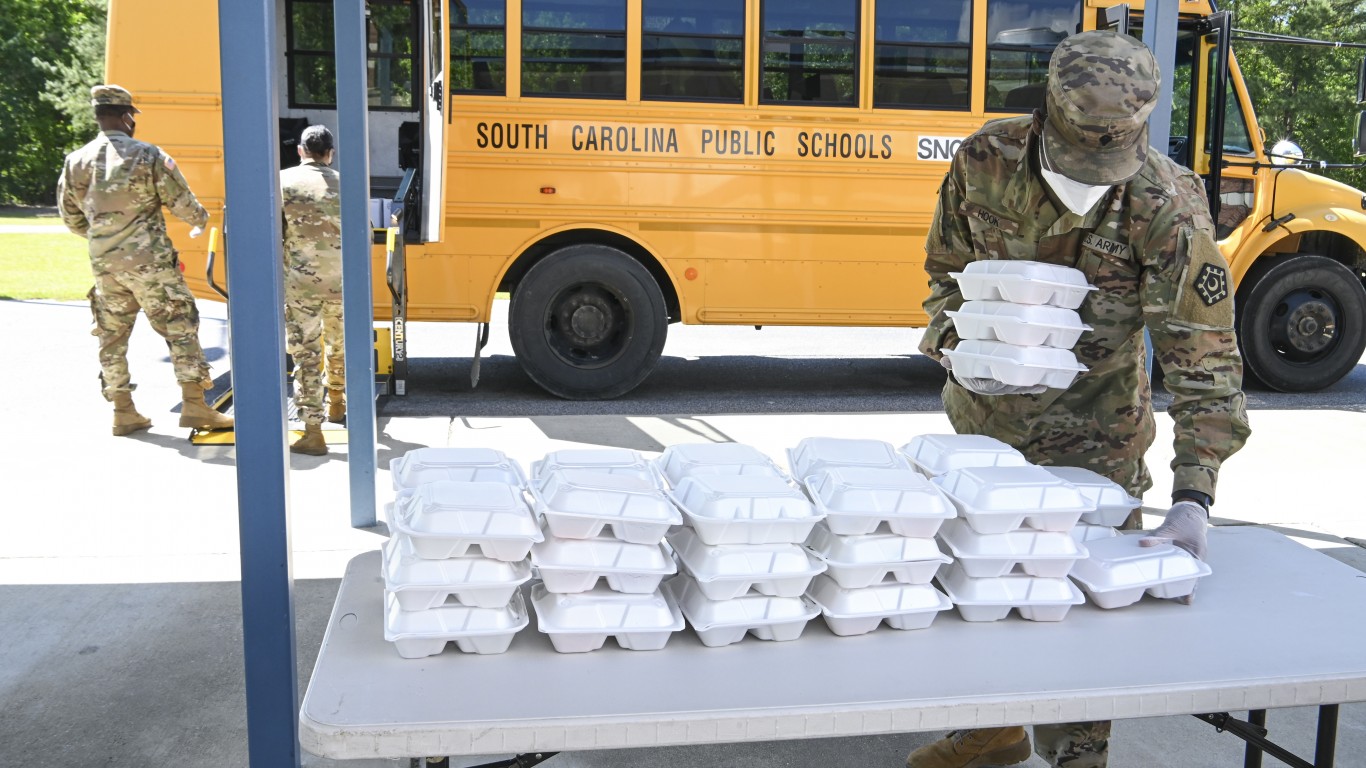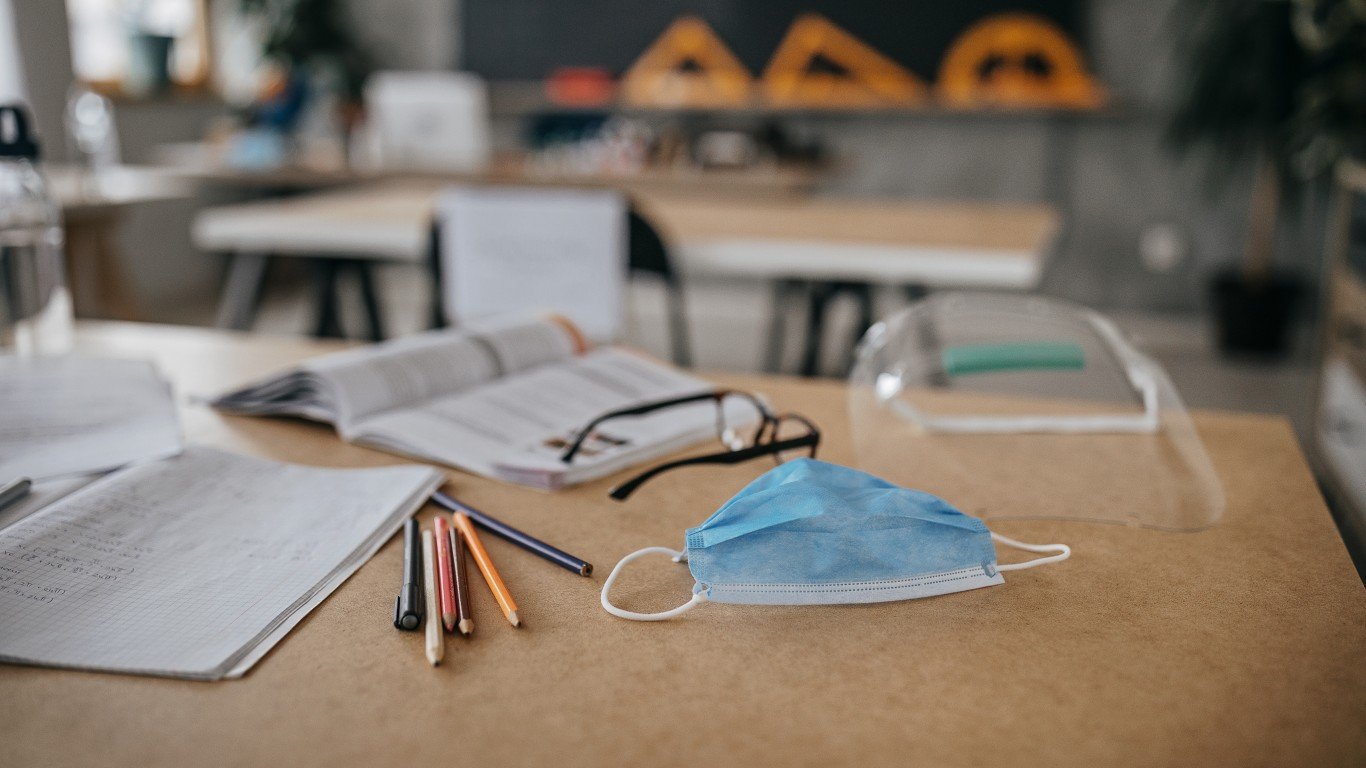

Many hoped the holidays would provide a respite from the unpredictability of schools’ schedules. Even after the winter break, if and how school can stay open changes almost on a daily basis.
24/7 Wall St. reviewed guidelines released by state governors and health and education departments as well as news articles to create a current list of school restrictions and re-closures in every state.
Daily temperature checks at the door, mask wearing, and staying socially distant were already the new normal for school kids. They have by now also become accustomed to sudden closures after students or staff tested positive for COVID-19.
However, since November, school closures have lasted more than a few days, with some moving to full-time online instruction even after the winter break. With the coronavirus pandemic still wreaking havoc on the U.S., switching to remote learning until further notice is increasingly an option. Teachers in some states are recommending that schools close for in person instruction and remain that way until the rest of the academic year.
The parameters for shutting down schools for in-person instruction are not uniform and are up to each school to determine. At the beginning of the school year, some schools decided to go fully remote only after one confirmed COVID-19 case. Later, school districts didn’t shut down a school until dozens of COVID-19 cases were confirmed. Now, some schools move to full-time remote learning just as a precaution if there is a rise in infections in the community.
Almost a year after the first case of coronavirus was confirmed in the U.S., the pandemic continues to spread across the country even as the COVID-19 vaccinations began nationwide. From Dec. 19 to Dec. 2020 — here is a timeline of coronavirus spread.
Click here to see how every state is managing schools during the pandemic

Alabama
> Re-closing schools: At least 3 counties are delaying the start of in-person instruction by a week after the second semester starts. Calhoun County Schools will be online full-time.
> Health screening precautions: Daily temperature checks
> COVID-19 cases as of Jan 5: 7,766 per 100,000 people — 18th highest (total: 379,593)
> Change in trailing 7-day avg. daily cases, Dec 29 – Jan 4: 7.5% — 23rd largest increase (from 347,897 to 374,095)
> Population: 4.9 million
[in-text-ad]

Alaska
> Re-closing schools: Anchorage School District delayed plans for in-person instruction, which was supposed to start in November, until further notice.
> Health screening precautions: Daily temperature and symptom screening for all
> COVID-19 cases as of Jan 5: 6,585 per 100,000 people — 25th highest (total: 48,560)
> Change in trailing 7-day avg. daily cases, Dec 29 – Jan 4: 5.3% — 15th smallest increase (from 45,909 to 48,363)
> Population: 737000
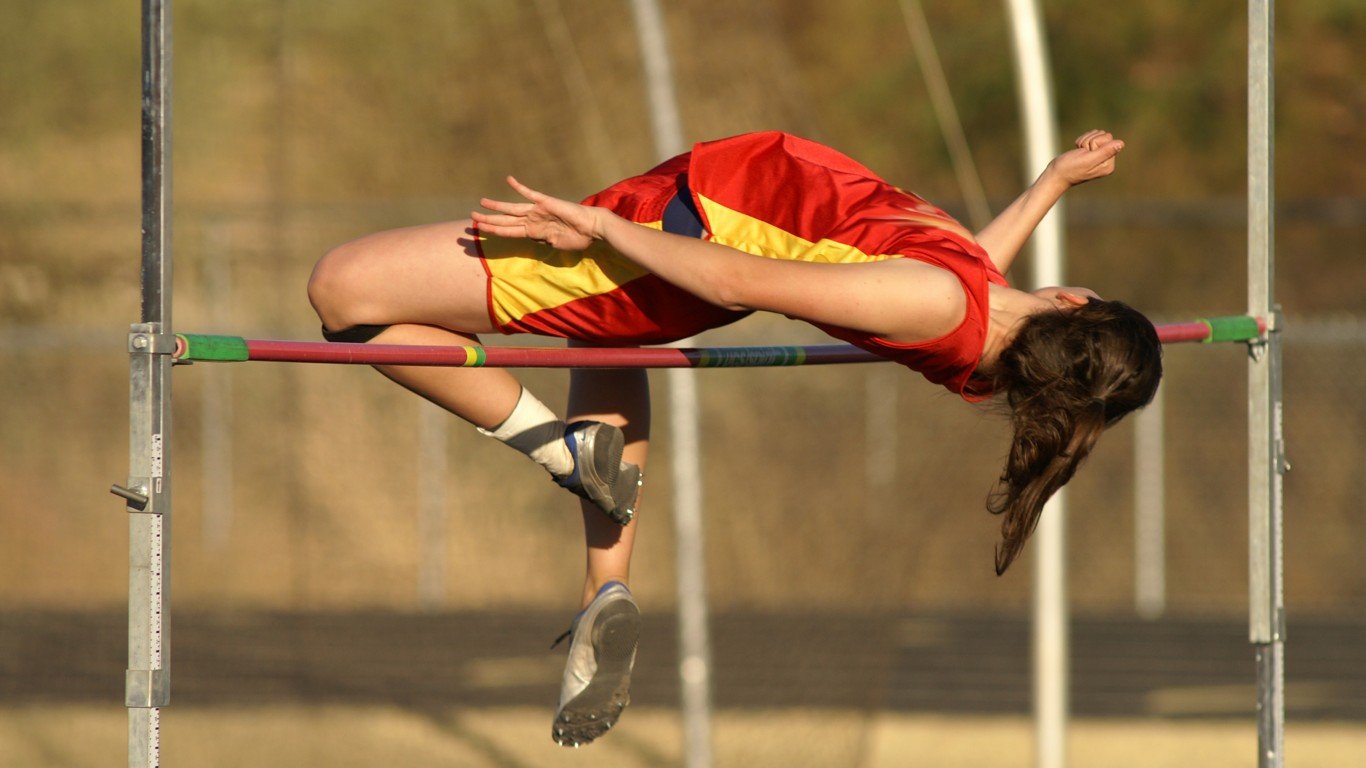
Arizona
> Re-closing schools: Mesa Public Schools, the largest public school district in Arizona, moved to remote learning at the beginning of the spring semester. Sunnyside District, the second largest in Southern Arizona, returned to remote-only.
> Health screening precautions: Daily symptom screening and temperature checks
> COVID-19 cases as of Jan 5: 7,913 per 100,000 people — 13th highest (total: 567,474)
> Change in trailing 7-day avg. daily cases, Dec 29 – Jan 4: 11.3% — 5th largest increase (from 504,423 to 561,542)
> Population: 7.2 million
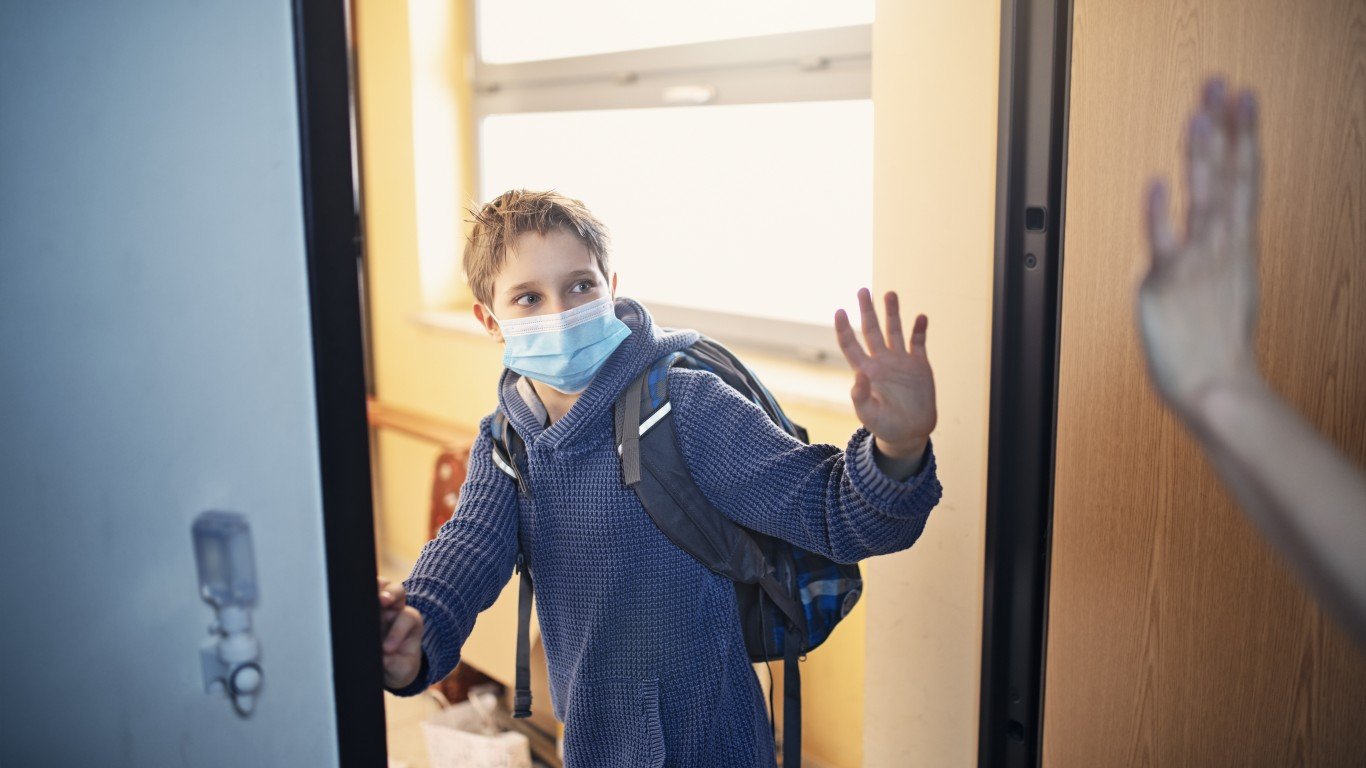
Arkansas
> Re-closing schools: At least 113 schools are in communities with high COVID-19 spread. Dozens of schools have moved to remote learning. At least one school in the Earle School District closed indefinitely, classes were moved online.
> Health screening precautions: Have screening stations, screening signs
> COVID-19 cases as of Jan 5: 7,926 per 100,000 people — 12th highest (total: 238,888)
> Change in trailing 7-day avg. daily cases, Dec 29 – Jan 4: 8.4% — 15th largest increase (from 216,528 to 234,781)
> Population: 3.0 million
[in-text-ad-2]
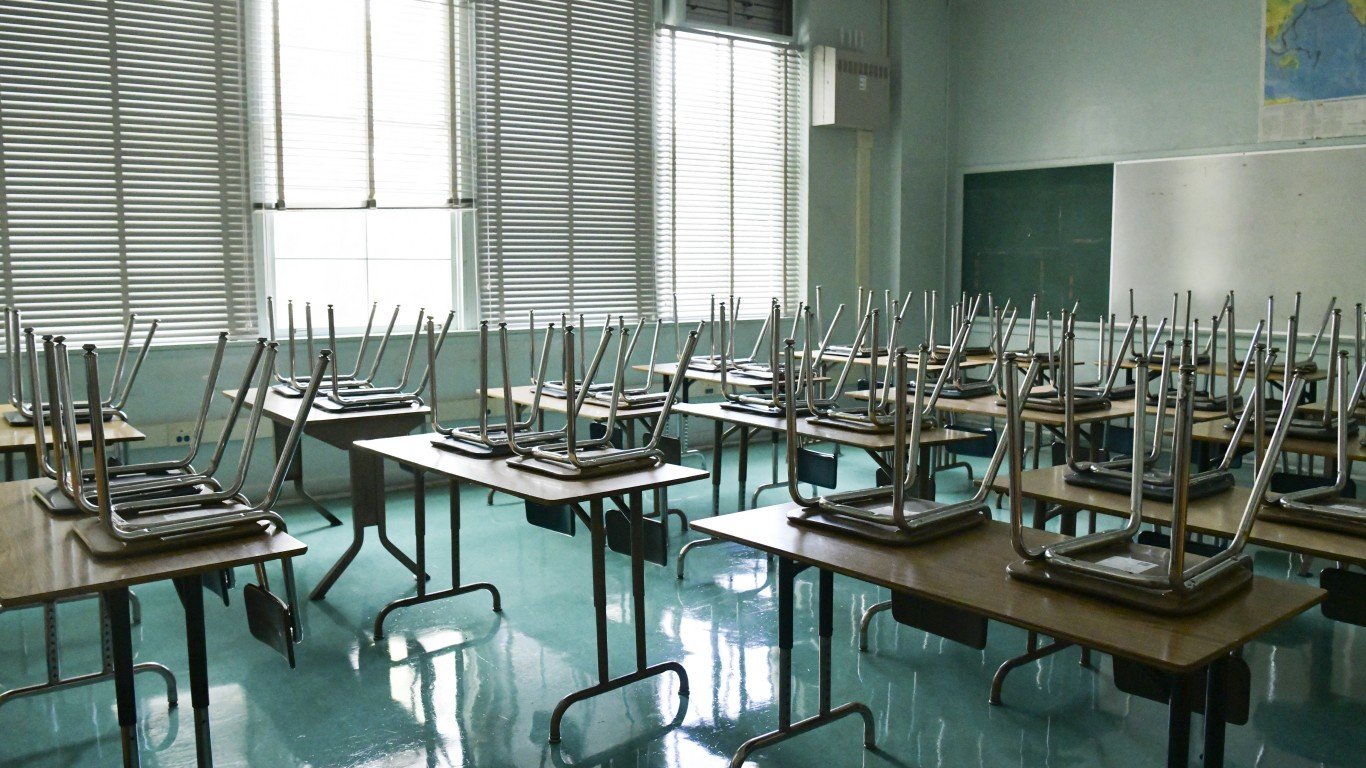
California
> Re-closing schools: 54 counties, which have 99.67% of K-12 students are in the purple “widespread” tier and can’t begin offering in-person instruction. Schools are required to close when at least 5% of staff and students test positive for Covid-19 within a 14-day period.
> Health screening precautions: Daily symptom screening and temperature checks, hand-washing required before entering school
> COVID-19 cases as of Jan 5: 6,199 per 100,000 people — 19th lowest (total: 2,452,334)
> Change in trailing 7-day avg. daily cases, Dec 29 – Jan 4: 12.3% — 4th largest increase (from 2,155,976 to 2,420,894)
> Population: 39.6 million
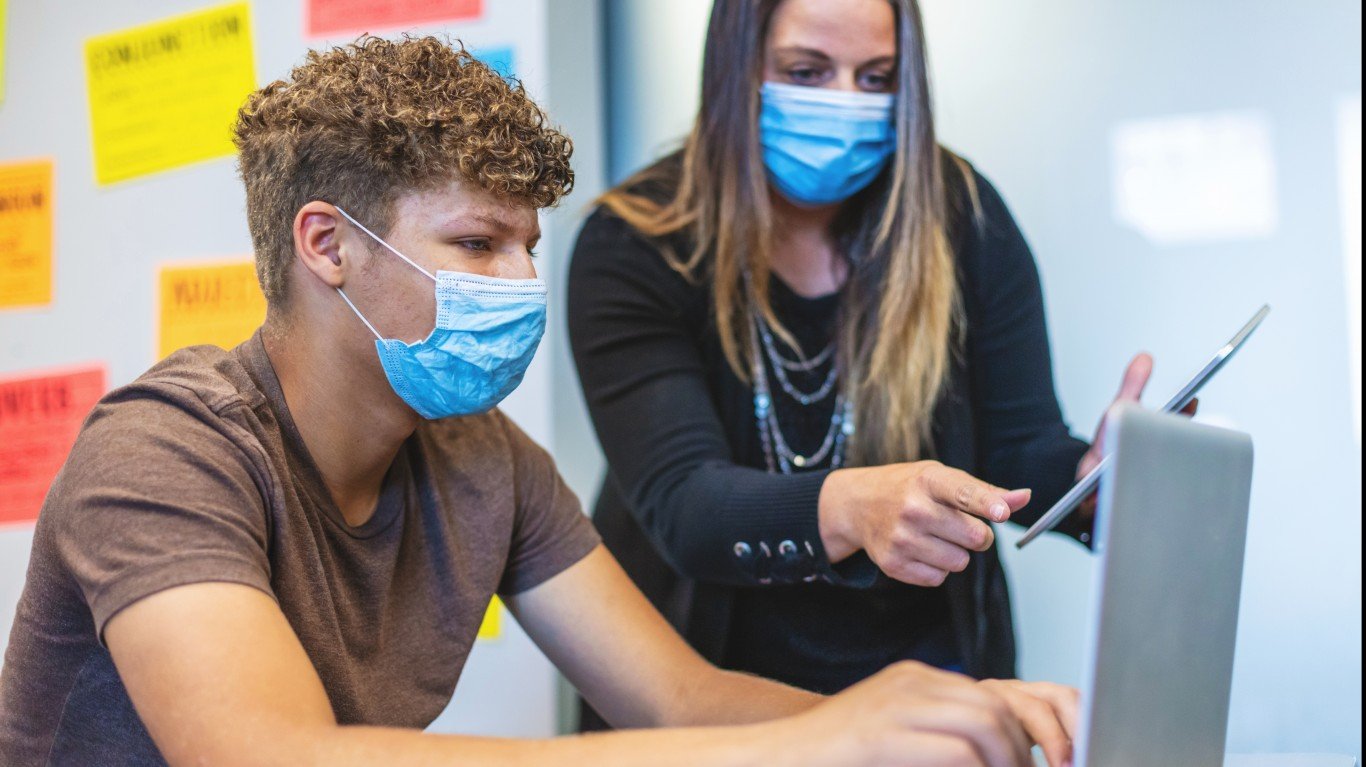
Colorado
> Re-closing schools: Gov. Jared Polis has said he would consider closing all schools closed again if that’s needed to get coronavirus cases under control. Many of the biggest school districts in Colorado are fully remote.
> Health screening precautions: At-home or on-site symptom screening, temperature checks
> COVID-19 cases as of Jan 5: 6,030 per 100,000 people — 18th lowest (total: 343,435)
> Change in trailing 7-day avg. daily cases, Dec 29 – Jan 4: 5.1% — 14th smallest increase (from 326,668 to 343,435)
> Population: 5.7 million
[in-text-ad]
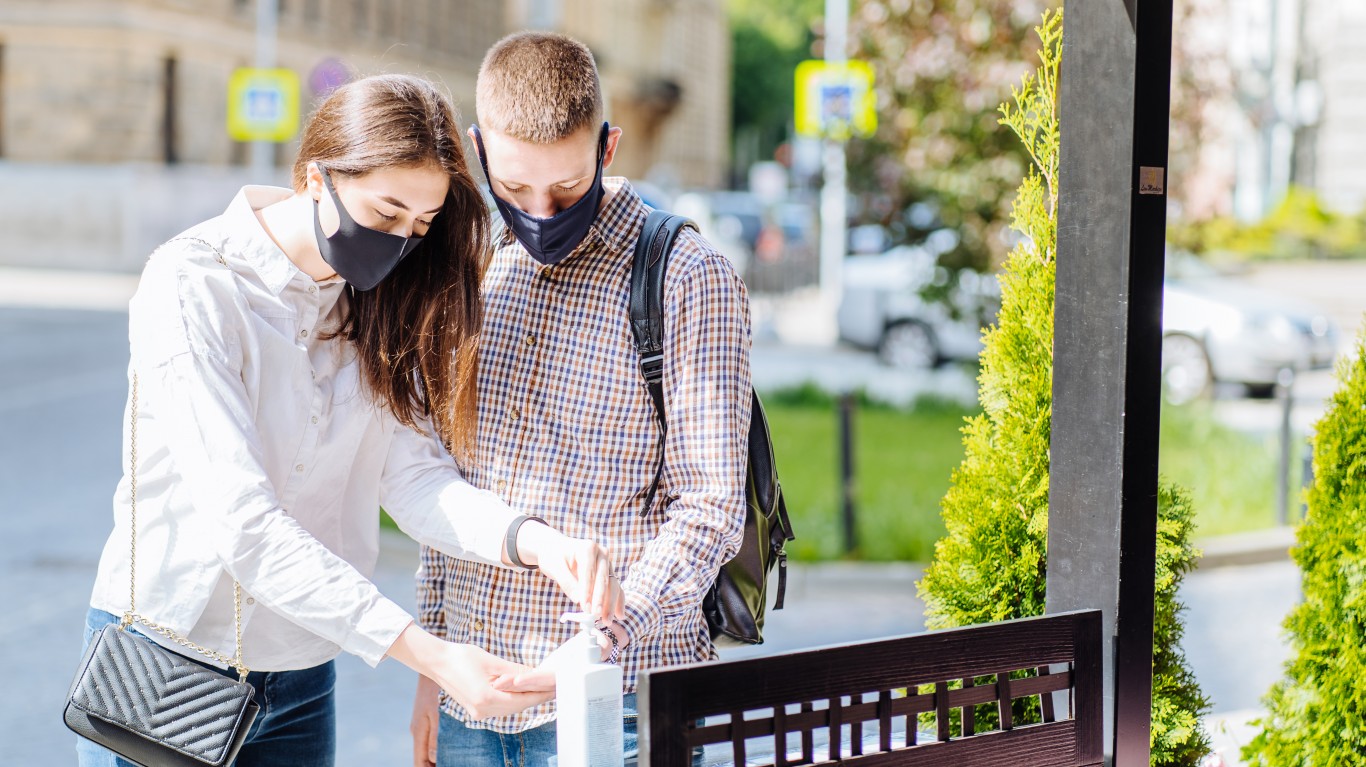
Connecticut
> Re-closing schools: All Bristol schools transitioned to full distance learning. At least 7 school districts switched to fully remote until mid-January. Schools are advised to close if they are in an area with an average of 25+ new cases per 100K residents in a week.
> Health screening precautions: Maximize social distancing, students bring their own water
> COVID-19 cases as of Jan 5: 5,513 per 100,000 people — 13th lowest (total: 196,968)
> Change in trailing 7-day avg. daily cases, Dec 29 – Jan 4: 7.4% — 25th smallest increase (from 181,200 to 194,636)
> Population: 3.6 million
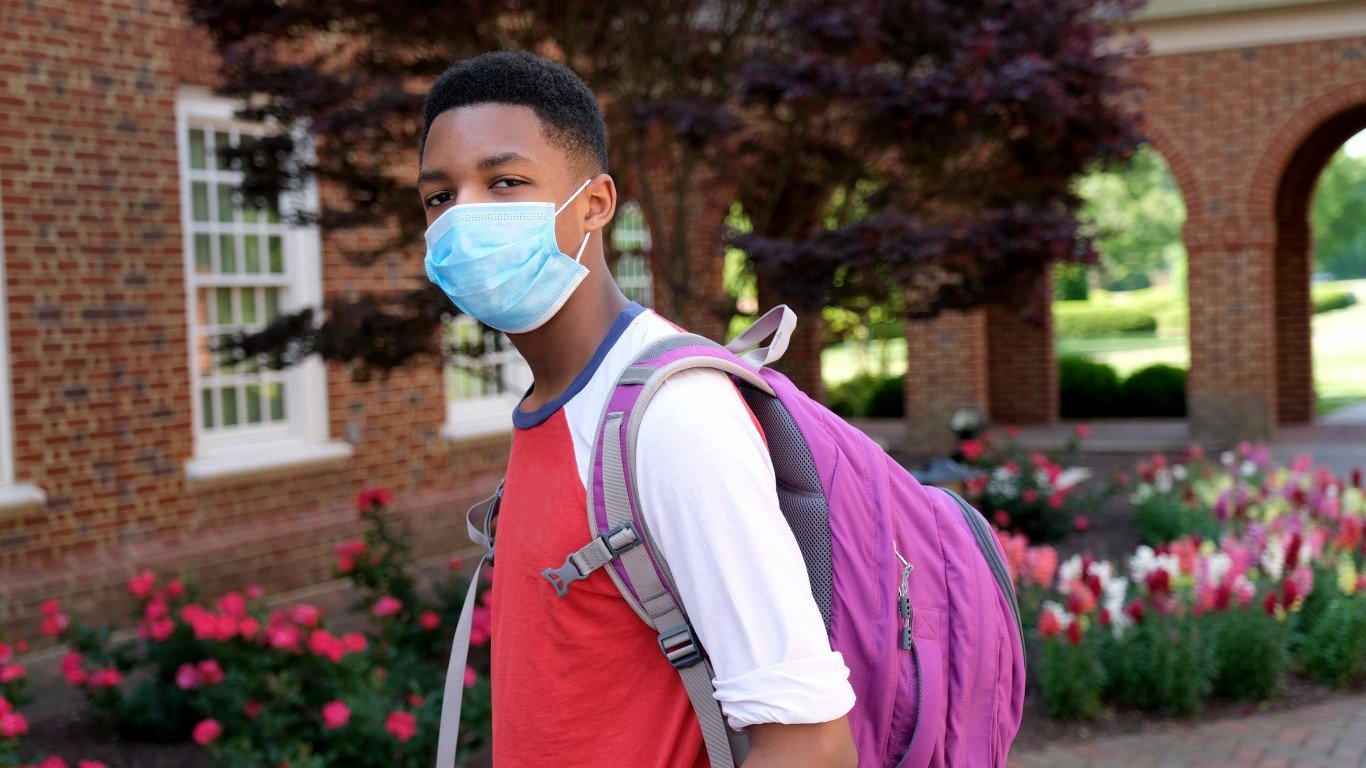
Delaware
> Re-closing schools: Most schools pause in-person learning until Jan. 8. Hybrid learning will return on Jan. 11. Sports competitions have been canceled.
> Health screening precautions: Daily symptom screening and temperature checks at home, the state will provide testing for staff and students
> COVID-19 cases as of Jan 5: 6,317 per 100,000 people — 22nd lowest (total: 61,100)
> Change in trailing 7-day avg. daily cases, Dec 29 – Jan 4: 8.7% — 11th largest increase (from 55,488 to 60,333)
> Population: 967000
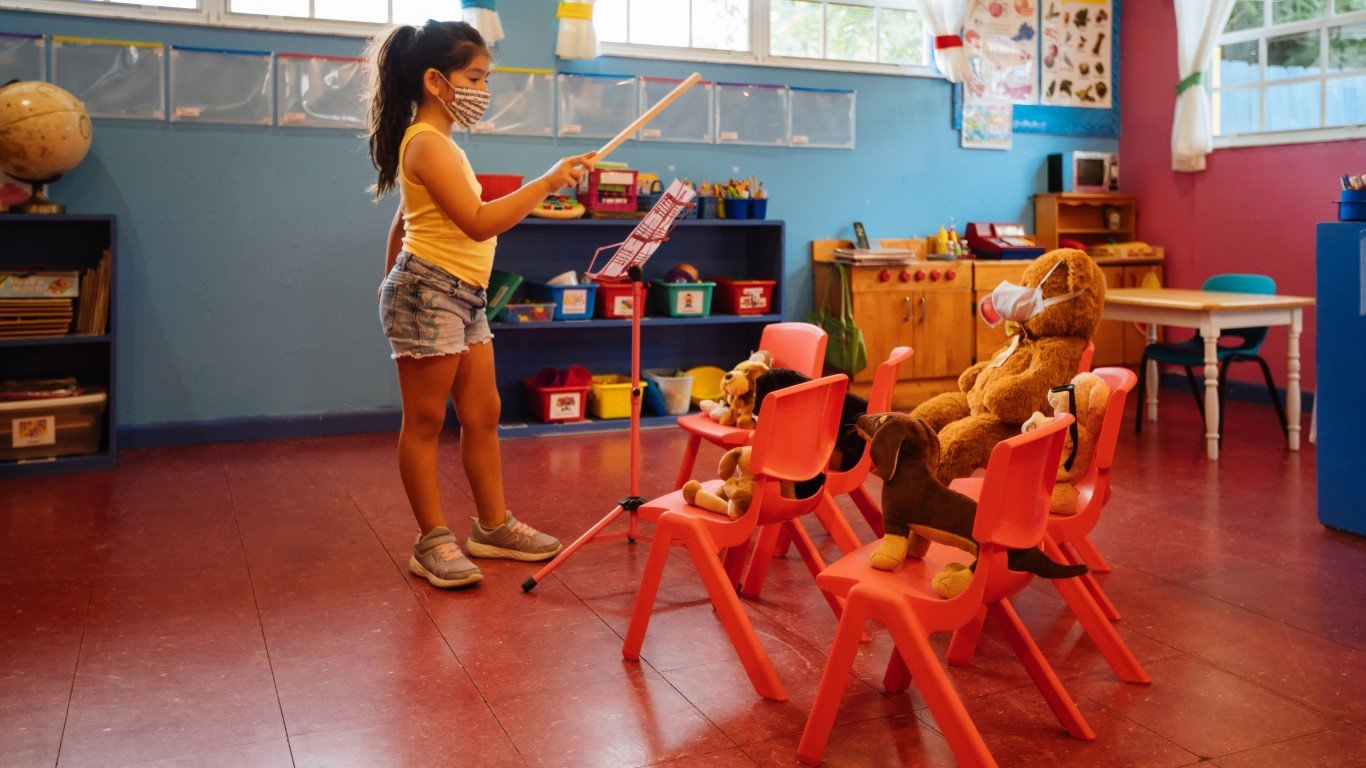
Florida
> Re-closing schools: Some Florida schools went fully remote for 2 weeks following the Christmas and New Year break. A new executive order has been issued extending remote and hybrid learning options.
> Health screening precautions: Set up secondary clinic for kids showing symptoms
> COVID-19 cases as of Jan 5: 6,536 per 100,000 people — 25th lowest (total: 1,392,123)
> Change in trailing 7-day avg. daily cases, Dec 29 – Jan 4: 7.5% — 22nd largest increase (from 1,280,177 to 1,376,692)
> Population: 21.3 million
[in-text-ad-2]
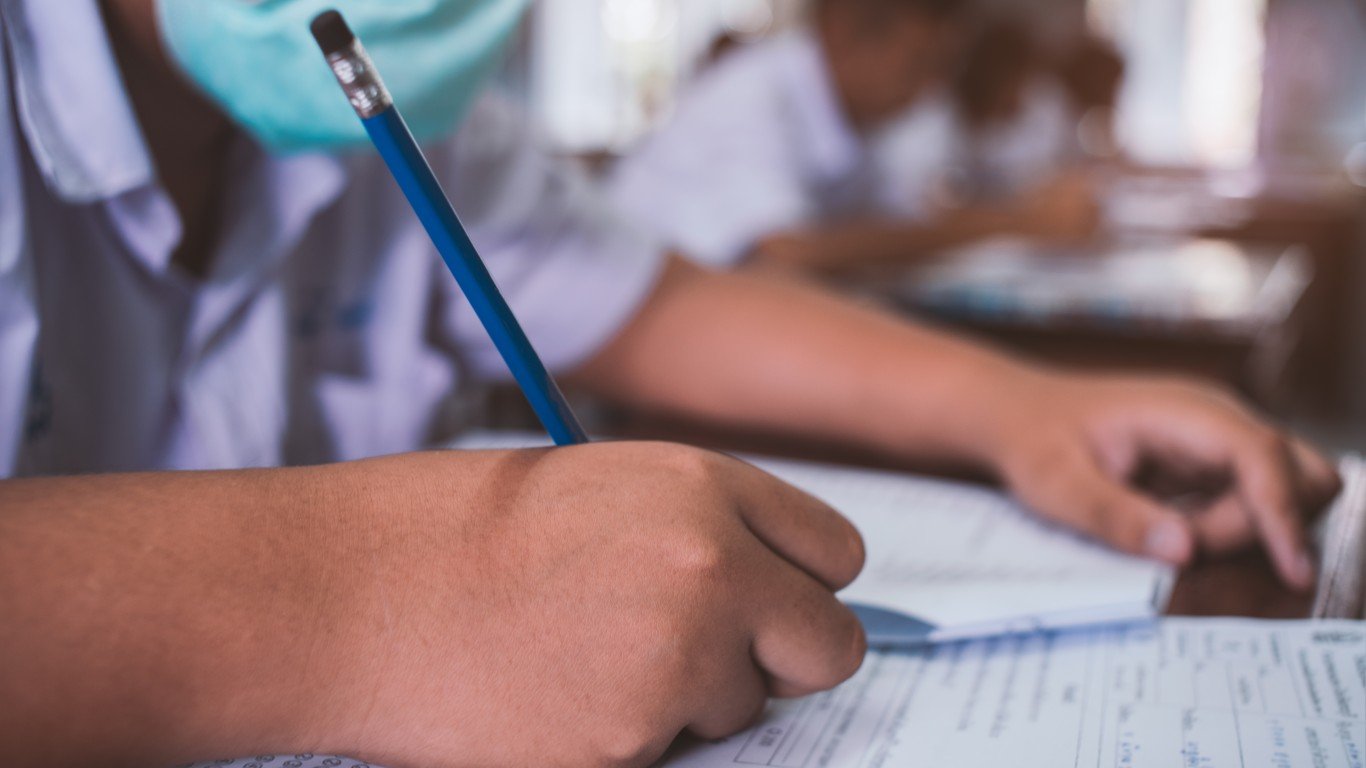
Georgia
> Re-closing schools: Scattered school closures have happened all over the state. Windsor Forest High School in Chatham County is among the latest to shut down until Jan. 11. Ware County Schools closed early for the holidays.
> Health screening precautions: Daily temperature checks for all
> COVID-19 cases as of Jan 5: 5,677 per 100,000 people — 16th lowest (total: 597,208)
> Change in trailing 7-day avg. daily cases, Dec 29 – Jan 4: 8.1% — 18th largest increase (from 546,859 to 591,106)
> Population: 10.5 million
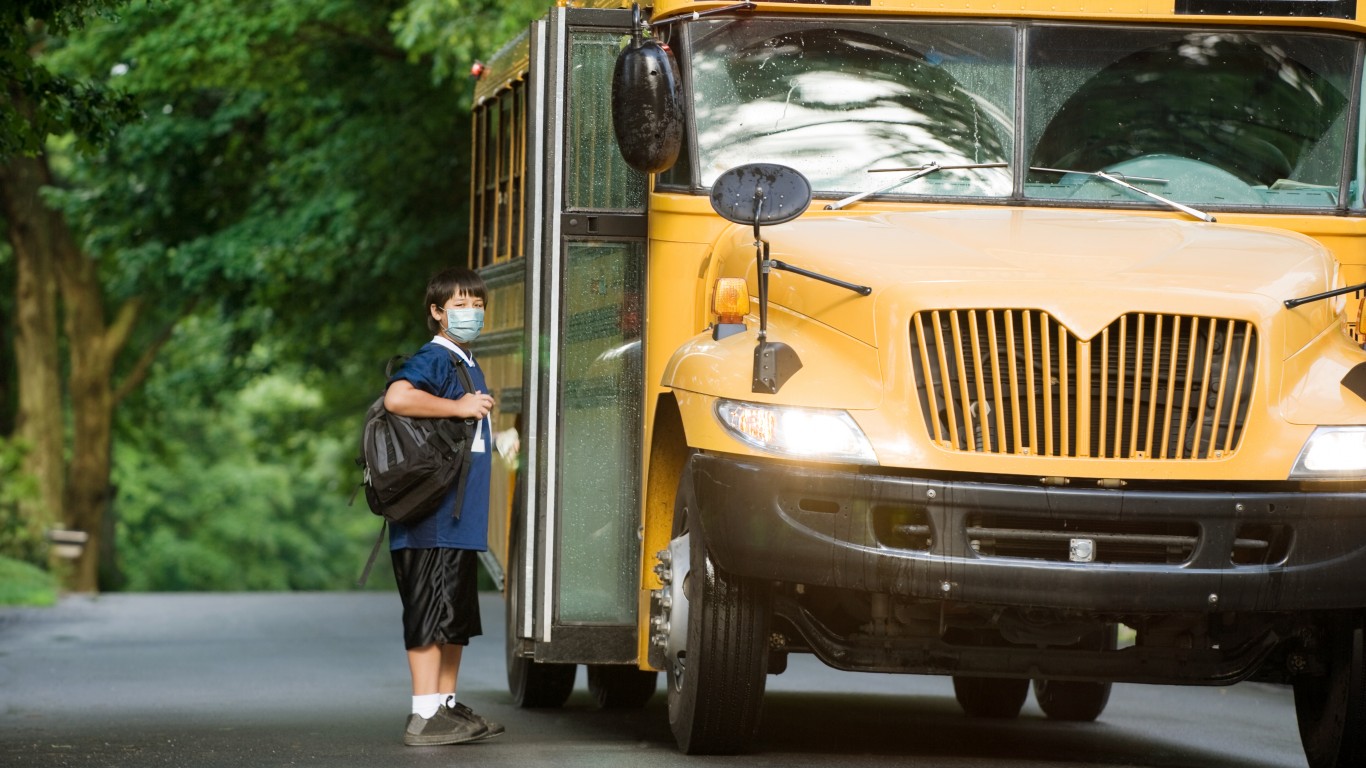
Hawaii
> Re-closing schools: Some schools are extending the first phase of reopening for in-person instruction, which consists of half-day classes for vulnerable students.
> Health screening precautions: Daily symptom screenings
> COVID-19 cases as of Jan 5: 1,561 per 100,000 people — 2nd lowest (total: 22,168)
> Change in trailing 7-day avg. daily cases, Dec 29 – Jan 4: 4.8% — 12th smallest increase (from 21,028 to 22,045)
> Population: 1.4 million
[in-text-ad]

Idaho
> Re-closing schools: All schools in Boise School District went fully remote after Thanksgiving break. The Emmett School District now requires all students and staff to wear masks.
> Health screening precautions: Daily symptom screening and temperature checks for all
> COVID-19 cases as of Jan 5: 8,169 per 100,000 people — 9th highest (total: 143,305)
> Change in trailing 7-day avg. daily cases, Dec 29 – Jan 4: 4.6% — 11th smallest increase (from 137,010 to 143,305)
> Population: 1.8 million
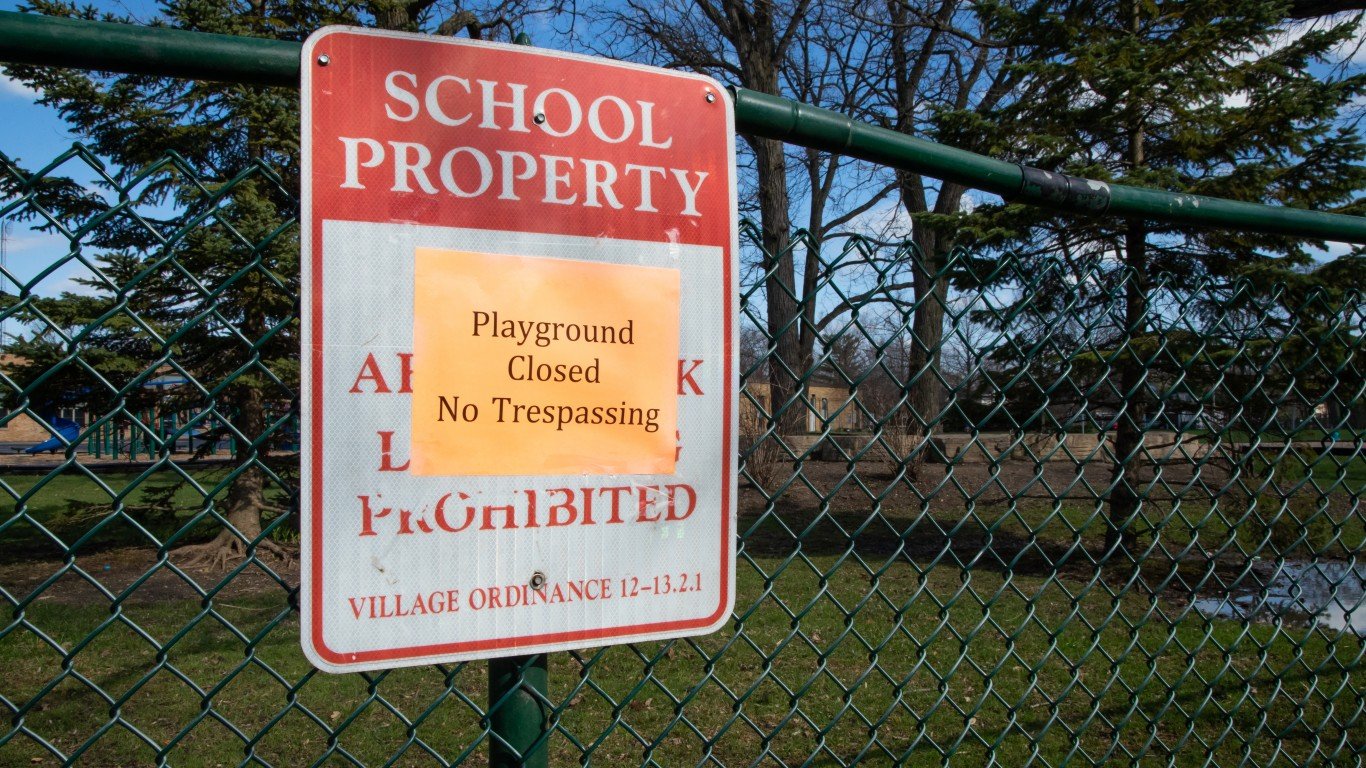
Illinois
> Re-closing schools: Chicago Public Schools will return to in-person learning on Jan 11, but high school students will continue remote. Catholic schools now have the option to transition to remote learning.
> Health screening precautions: Daily symptom screenings and temperature checks for all
> COVID-19 cases as of Jan 5: 7,784 per 100,000 people — 17th highest (total: 991,719)
> Change in trailing 7-day avg. daily cases, Dec 29 – Jan 4: 4.5% — 9th smallest increase (from 942,362 to 984,880)
> Population: 12.7 million

Indiana
> Re-closing schools: All schools in Marion County went fully remote until mid-January. About half of school districts in Indiana have moved to full-time virtual learning for various periods of time.
> Health screening precautions: Daily temperature checks
> COVID-19 cases as of Jan 5: 7,966 per 100,000 people — 10th highest (total: 533,083)
> Change in trailing 7-day avg. daily cases, Dec 29 – Jan 4: 6.7% — 19th smallest increase (from 496,306 to 529,688)
> Population: 6.7 million
[in-text-ad-2]
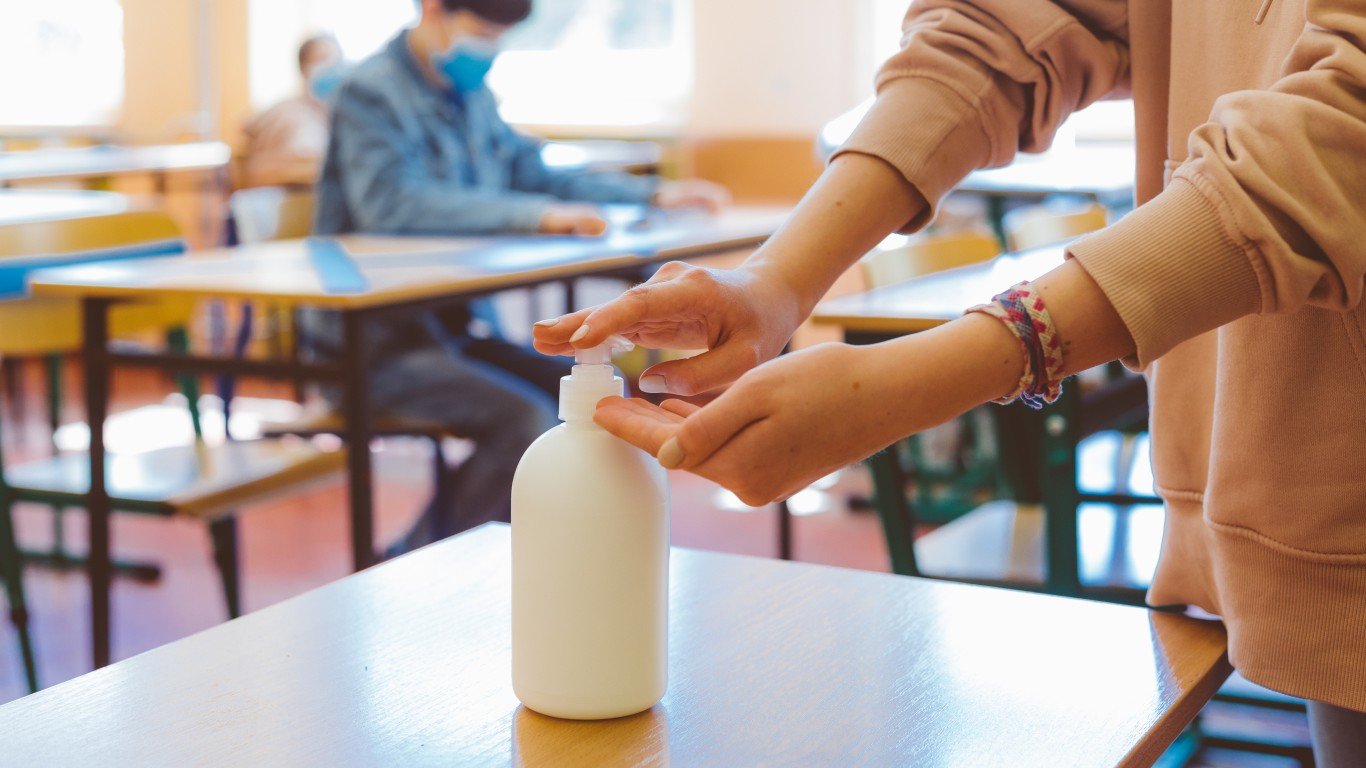
Iowa
> Re-closing schools: 33 counties have a 14-day rolling average positivity rate at or above 15%, which is the threshold that must be met before school districts can request to go to online-only learning.
> Health screening precautions: Up to each school
> COVID-19 cases as of Jan 5: 9,083 per 100,000 people — 5th highest (total: 286,679)
> Change in trailing 7-day avg. daily cases, Dec 29 – Jan 4: 3.4% — 6th smallest increase (from 275,473 to 284,866)
> Population: 3.2 million
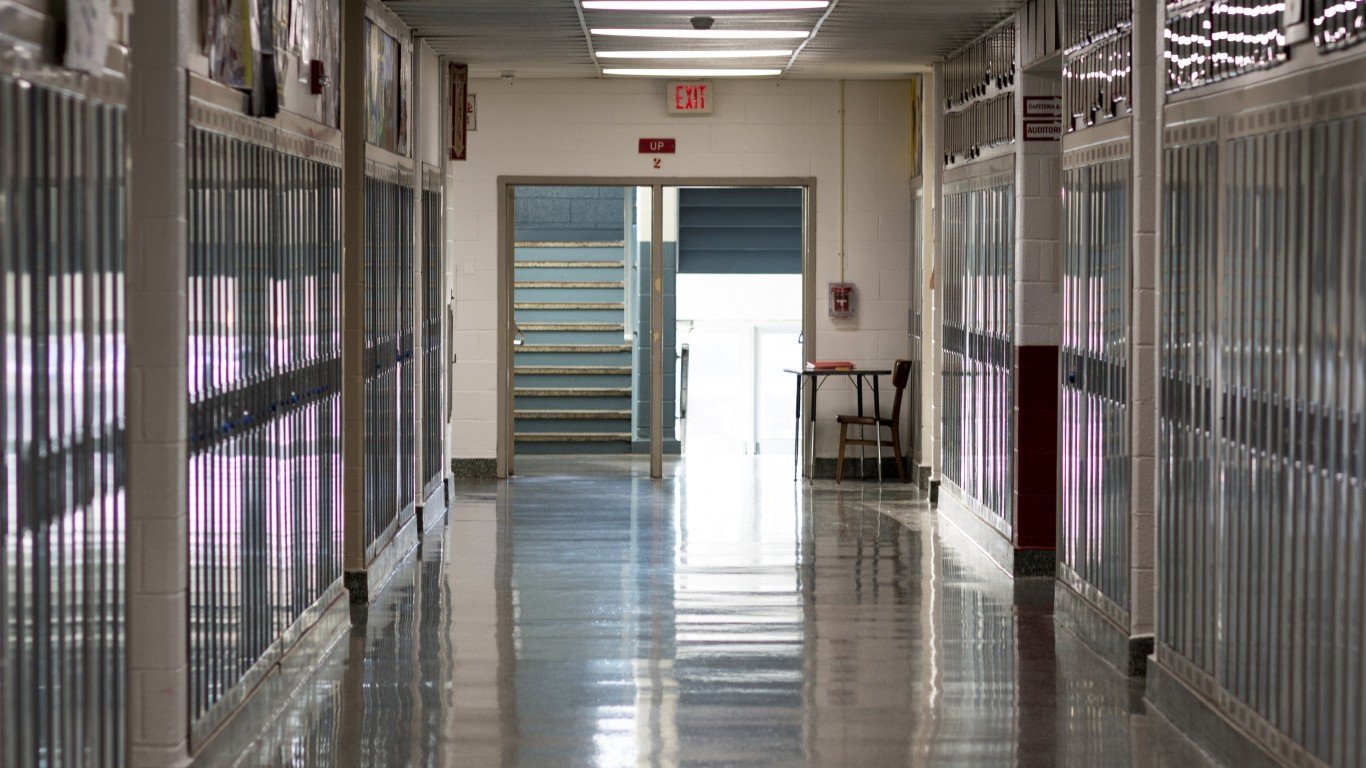
Kansas
> Re-closing schools: Schools in small and big towns have moved classes online full-time. As of Dec. 11, Wichita school district staff with COVID-19 accounted for 799 of the 1,182 cases the district has reported since Aug. 8.
> Health screening precautions: Daily temperature checks for staff
> COVID-19 cases as of Jan 5: 7,945 per 100,000 people — 11th highest (total: 231,317)
> Change in trailing 7-day avg. daily cases, Dec 29 – Jan 4: 7.1% — 21st smallest increase (from 216,062 to 231,317)
> Population: 2.9 million
[in-text-ad]

Kentucky
> Re-closing schools: All Kentucky public and private K-12 schools moved to online instruction in December. Middle schools and high schools remained in remote learning until Jan. 4. Perry County moved to online learning, adding makeup days at the end of the academic year.
> Health screening precautions: Daily temperature checks
> COVID-19 cases as of Jan 5: 6,285 per 100,000 people — 20th lowest (total: 280,836)
> Change in trailing 7-day avg. daily cases, Dec 29 – Jan 4: 8.0% — 19th largest increase (from 258,517 to 279,143)
> Population: 4.5 million
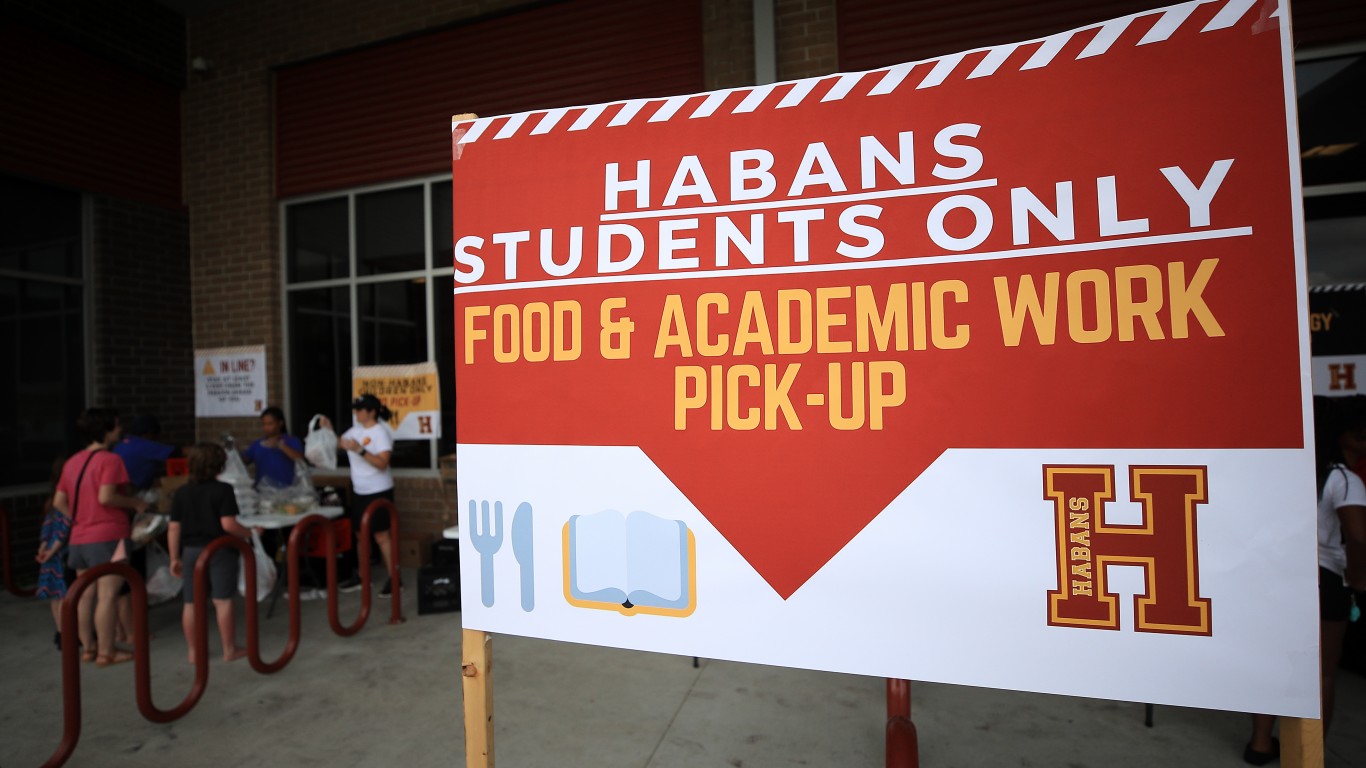
Louisiana
> Re-closing schools: High school students across the state are required to do in-person testing. Several schools in the Baton Rouge area closed before the Christmas break. Some will remain fully remote until the end of the fall semester.
> Health screening precautions: Daily symptom screening and temperature checks
> COVID-19 cases as of Jan 5: 7,010 per 100,000 people — 23rd highest (total: 326,648)
> Change in trailing 7-day avg. daily cases, Dec 29 – Jan 4: 7.2% — 24th smallest increase (from 300,539 to 322,181)
> Population: 4.7 million
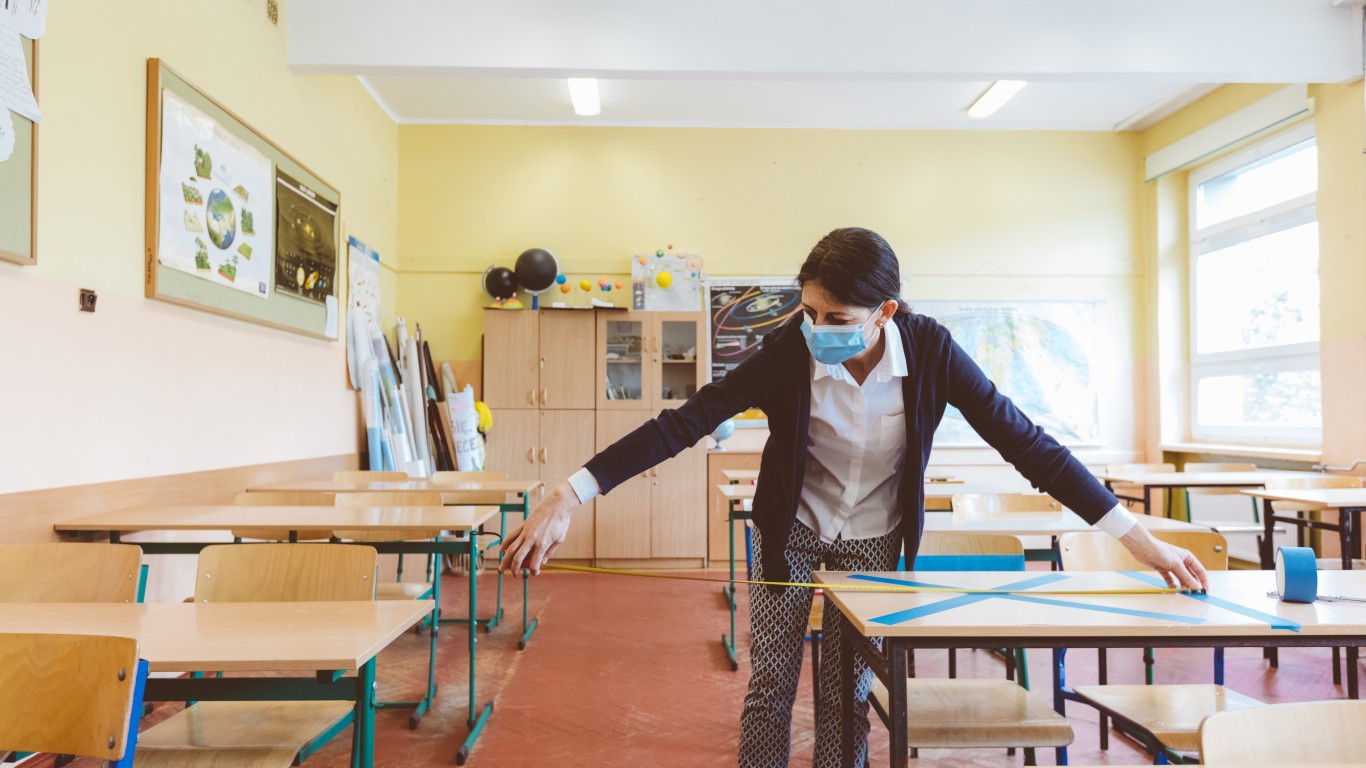
Maine
> Re-closing schools: Some schools are forced to move fully remote due to staffing shortages. 4 of Maine’s 16 counties are in the “yellow” category of transmission, meaning schools may want to suspend extracurricular activities and limit the number of people in buildings at on
> Health screening precautions: Daily self-checks for students and staff
> COVID-19 cases as of Jan 5: 1,985 per 100,000 people — 3rd lowest (total: 26,565)
> Change in trailing 7-day avg. daily cases, Dec 29 – Jan 4: 16.3% — the largest increase (from 22,319 to 25,968)
> Population: 1.3 million
[in-text-ad-2]

Maryland
> Re-closing schools: Many schools districts are canceling plans to move to in-person instruction any time soon.
> Health screening precautions: Daily temperature checks for staff
> COVID-19 cases as of Jan 5: 4,795 per 100,000 people — 8th lowest (total: 289,758)
> Change in trailing 7-day avg. daily cases, Dec 29 – Jan 4: 6.9% — 20th smallest increase (from 269,183 to 287,802)
> Population: 6.0 million
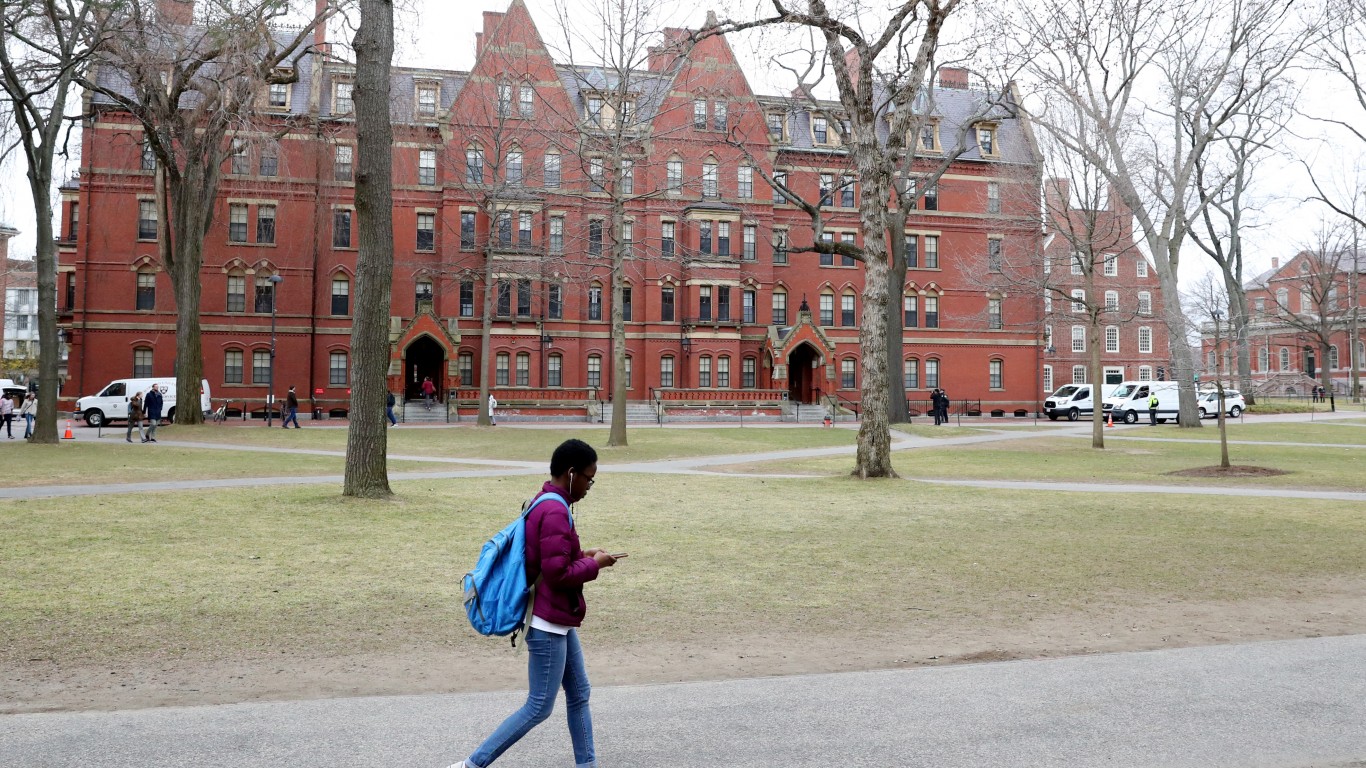
Massachusetts
> Re-closing schools: Public schools in Boston moved classes online, in-person instruction will resume when there are 2 full weeks of falling infection rates. The state started a free rapid COVID-19 testing program.
> Health screening precautions: Temperature checks are not recommended
> COVID-19 cases as of Jan 5: 5,755 per 100,000 people — 17th lowest (total: 397,202)
> Change in trailing 7-day avg. daily cases, Dec 29 – Jan 4: 8.6% — 12th largest increase (from 356,934 to 387,662)
> Population: 6.9 million
[in-text-ad]

Michigan
> Re-closing schools: Many schools in the most populous counties stayed closed until after the winter break. High schools were allowed to resume in-person learning on Jan 4.
> Health screening precautions: Daily temperature checks recommended
> COVID-19 cases as of Jan 5: 5,469 per 100,000 people — 12th lowest (total: 546,642)
> Change in trailing 7-day avg. daily cases, Dec 29 – Jan 4: 4.6% — 10th smallest increase (from 519,876 to 543,611)
> Population: 10.0 million
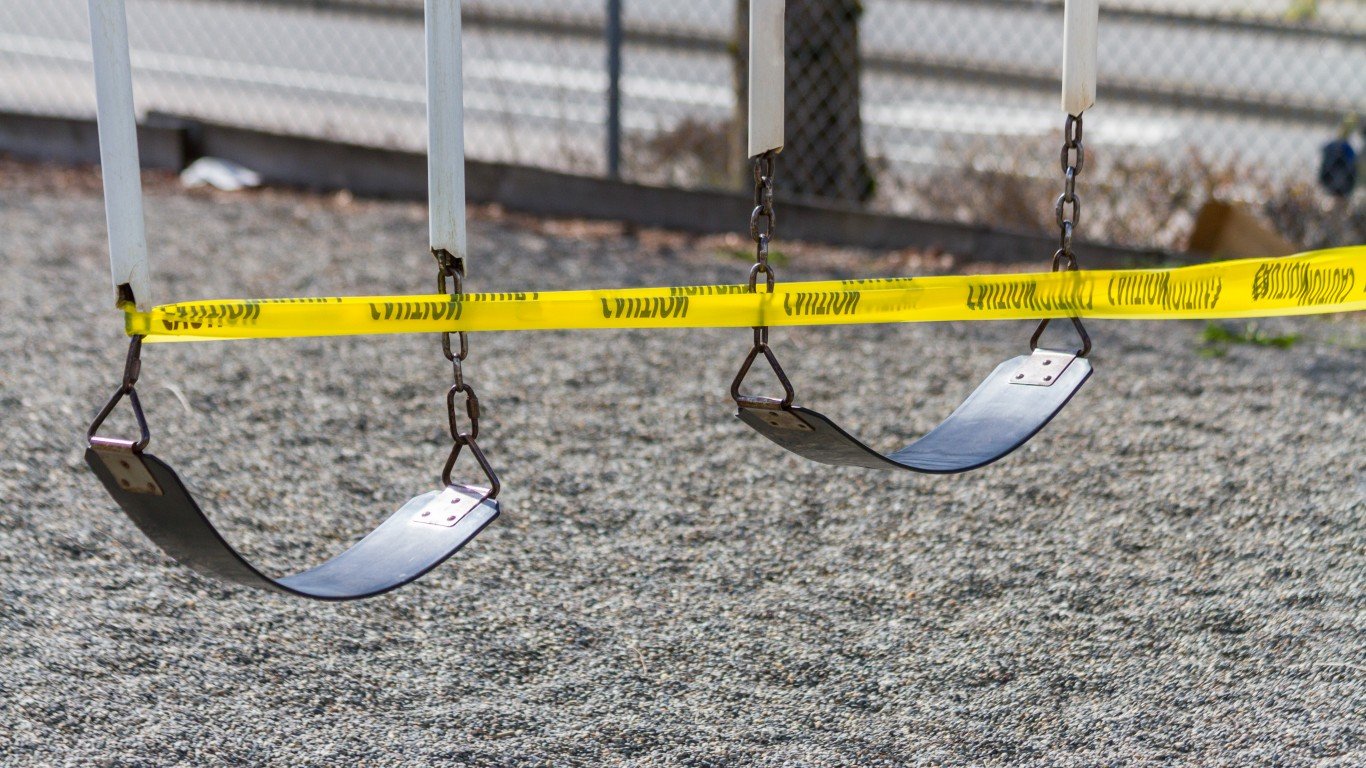
Minnesota
> Re-closing schools: At least 17 of the state’s 20 largest school districts are in distance learning for middle and high school students. Minnesota elementary schools can reopen Jan. 18.
> Health screening precautions: Daily symptom screening and temperature checks
> COVID-19 cases as of Jan 5: 7,579 per 100,000 people — 20th highest (total: 425,261)
> Change in trailing 7-day avg. daily cases, Dec 29 – Jan 4: 3.3% — 3rd smallest increase (from 410,138 to 423,688)
> Population: 5.6 million

Mississippi
> Re-closing schools: 1,076 staff and 621 students across the state tested positive for COVID-19 between Dec 7 – Dec 11, slighly less than the peak period between Nov 30 – Dec 4.
> Health screening precautions: Daily symptom screening and temperature checks
> COVID-19 cases as of Jan 5: 7,549 per 100,000 people — 21st highest (total: 225,444)
> Change in trailing 7-day avg. daily cases, Dec 29 – Jan 4: 7.5% — 24th largest increase (from 208,089 to 223,677)
> Population: 3.0 million
[in-text-ad-2]
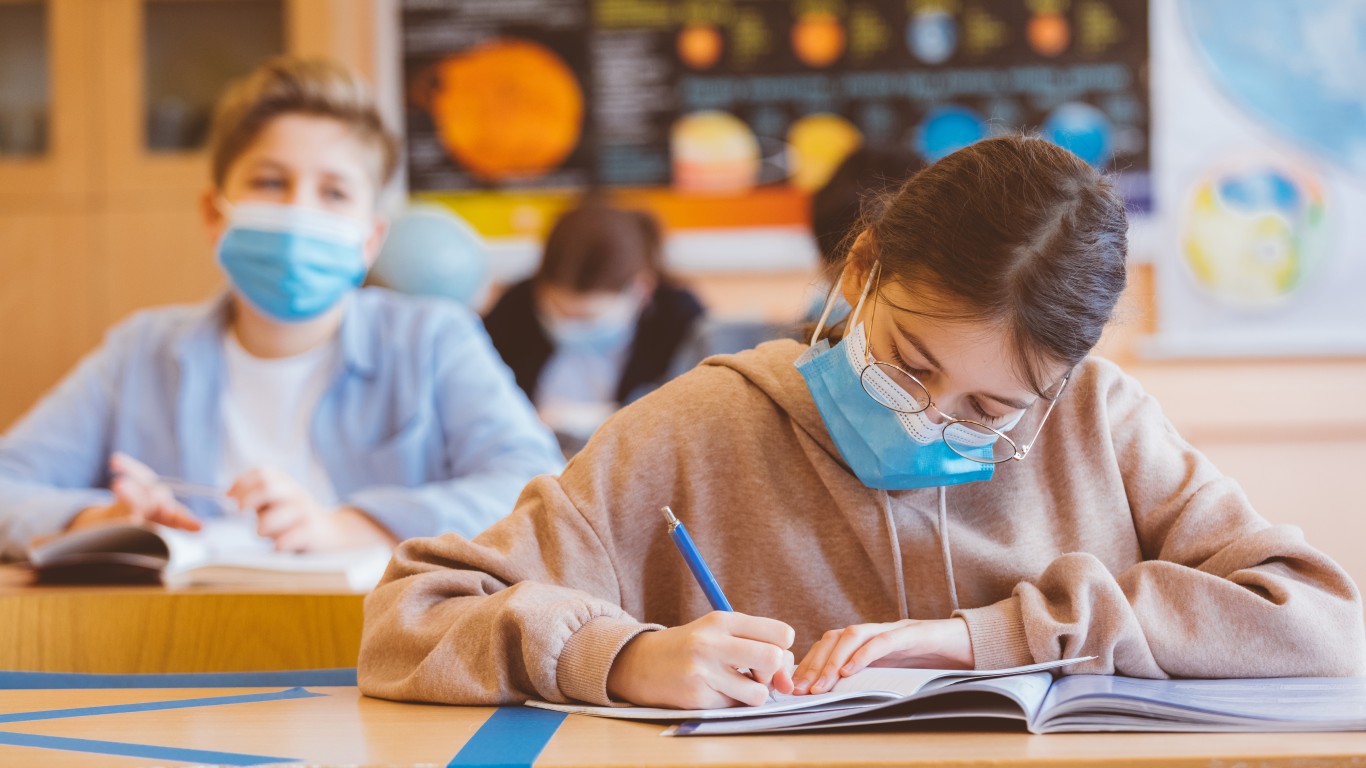
Missouri
> Re-closing schools: New mandates say that if people wear mask correctly and show no symptoms, they don’t have to be quarantined for 14 days if exposed.
> Health screening precautions: Daily symptom screening.
> COVID-19 cases as of Jan 5: 6,620 per 100,000 people — 24th highest (total: 405,589)
> Change in trailing 7-day avg. daily cases, Dec 29 – Jan 4: 5.0% — 13th smallest increase (from 383,616 to 402,957)
> Population: 6.1 million
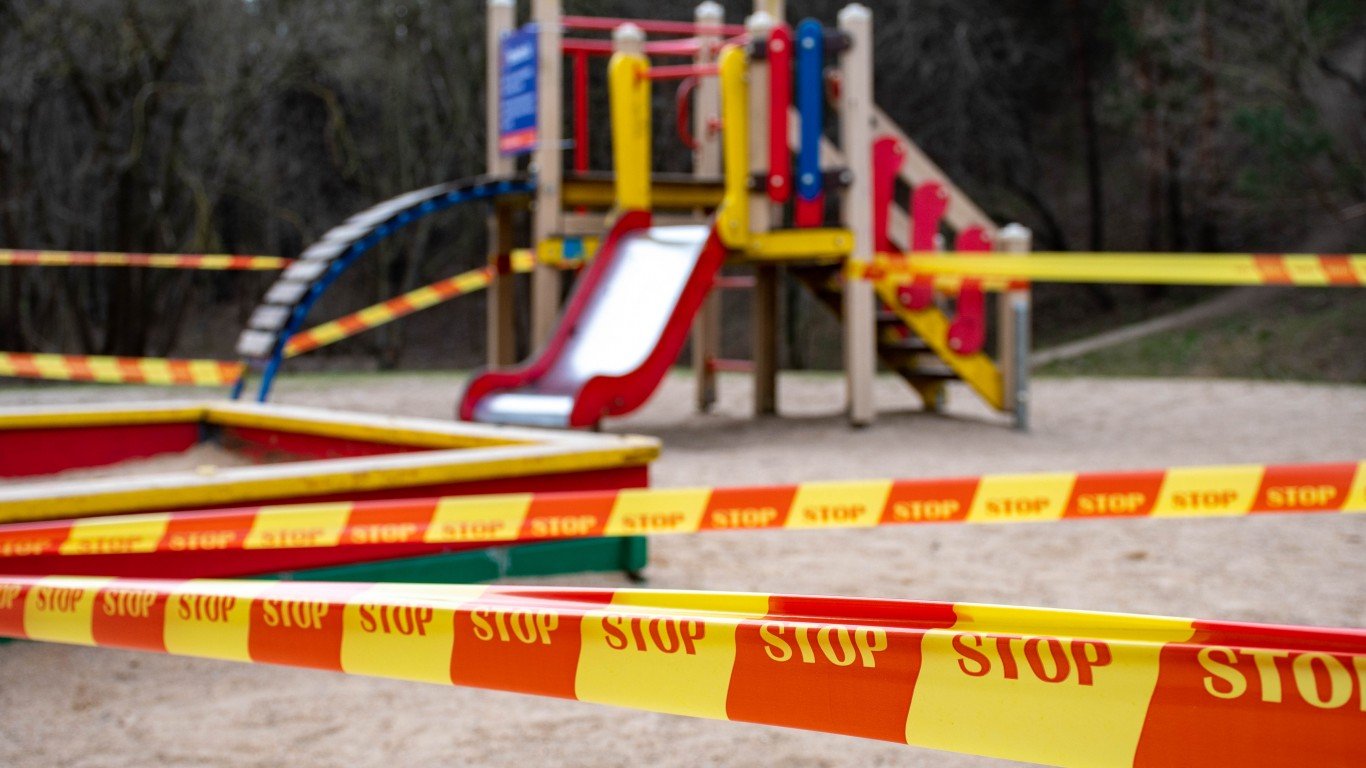
Montana
> Re-closing schools: As of Dec 2, there were 3,594 school-related COVID-19 cases, with almost as many cases in elementary schools as in high schools.
> Health screening precautions: Visitor temperature checks
> COVID-19 cases as of Jan 5: 7,849 per 100,000 people — 14th highest (total: 83,378)
> Change in trailing 7-day avg. daily cases, Dec 29 – Jan 4: 3.3% — 4th smallest increase (from 79,999 to 82,664)
> Population: 1.1 million
[in-text-ad]
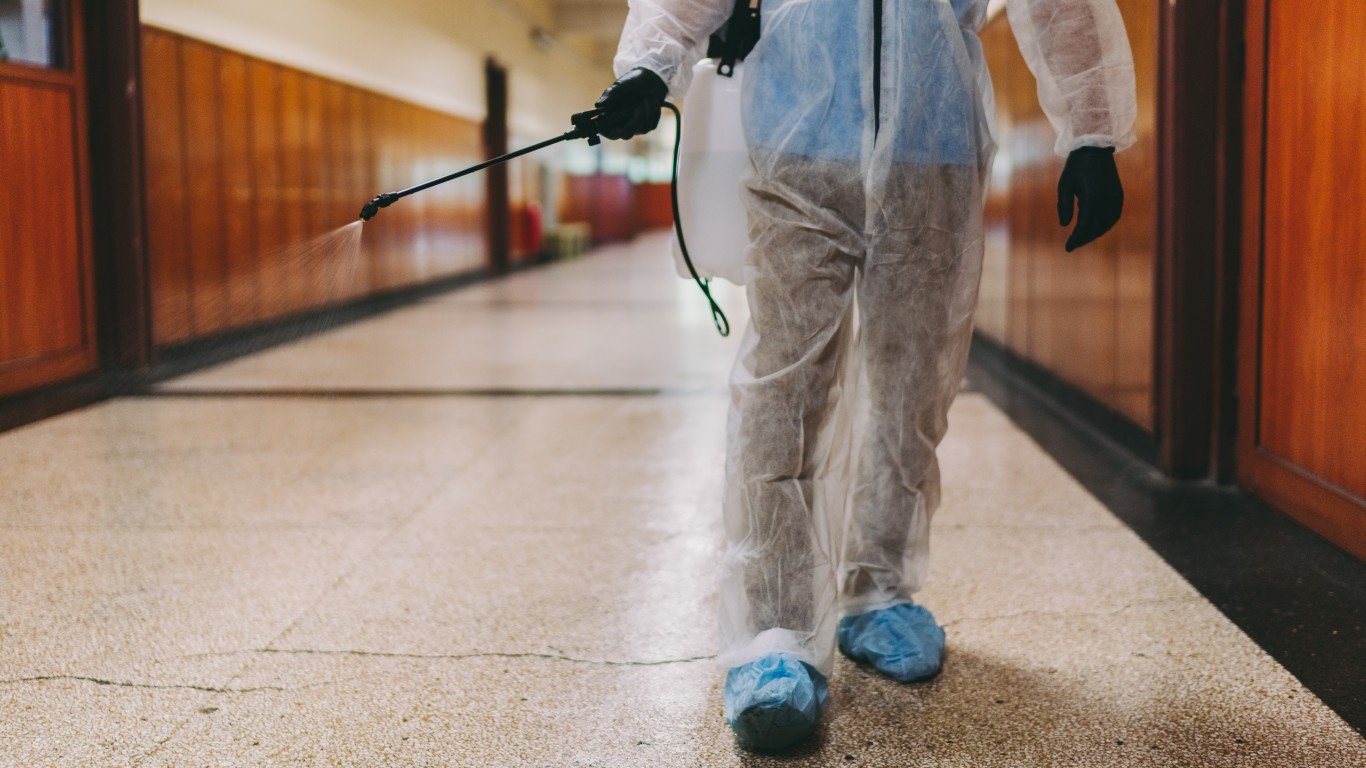
Nebraska
> Re-closing schools: Teachers union Nebraska State Education Association called on Gov. Ricketts to enact more restrictions amid a new surge of cases.
> Health screening precautions: Visitors wash hands before entering the school, symptom self-screen
> COVID-19 cases as of Jan 5: 8,790 per 100,000 people — 7th highest (total: 169,585)
> Change in trailing 7-day avg. daily cases, Dec 29 – Jan 4: 4.3% — 8th smallest increase (from 161,974 to 169,000)
> Population: 1.9 million
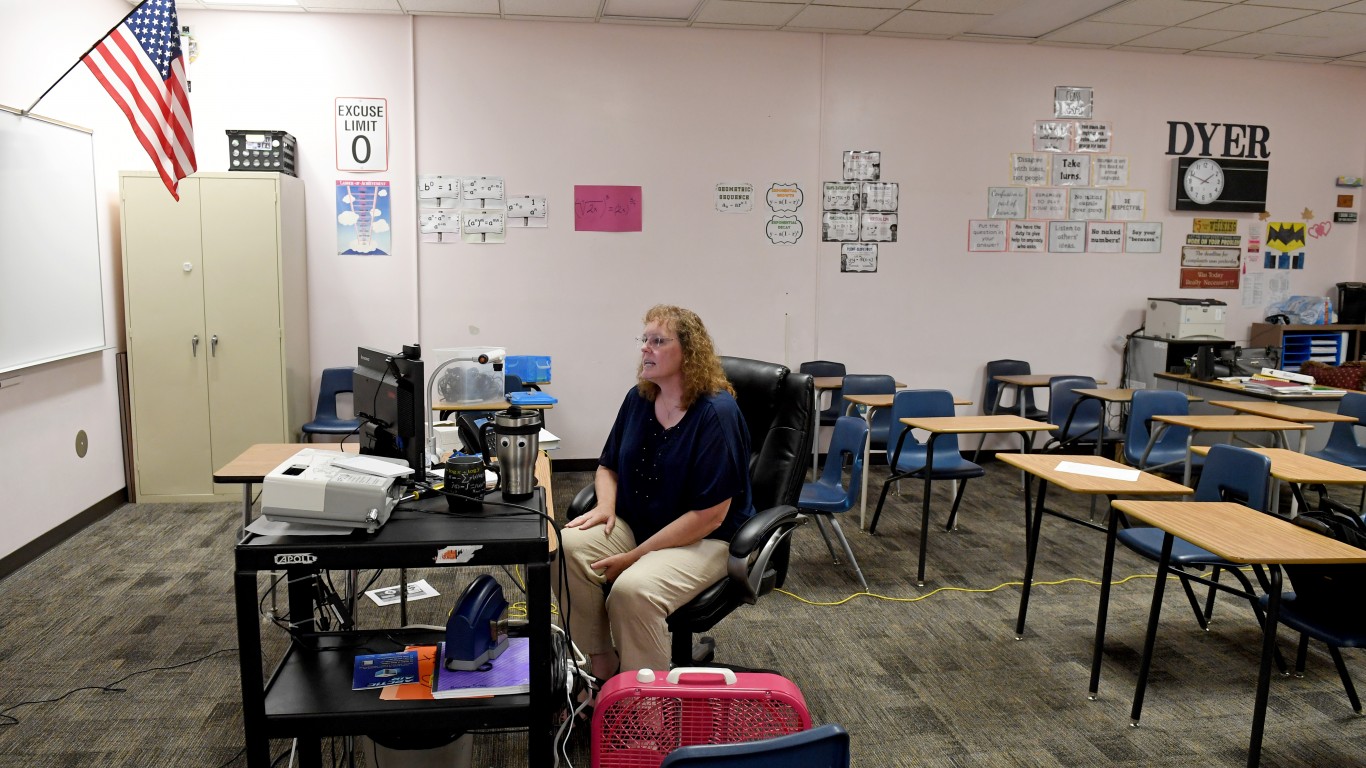
Nevada
> Re-closing schools: Secondary students in schools in Washoe County School District moved to full distance learning until Jan. 4. Schools started testing symptomatic students and staff with an antigen test. Some districts have been allowed to bypass regulations to hire substi
> Health screening precautions: Daily symptom screening and temperature checks recommended, post signs about proper hand-washing and other ways to stop the virus
> COVID-19 cases as of Jan 5: 7,633 per 100,000 people — 19th highest (total: 231,618)
> Change in trailing 7-day avg. daily cases, Dec 29 – Jan 4: 6.1% — 16th smallest increase (from 218,377 to 231,618)
> Population: 3.0 million

New Hampshire
> Re-closing schools: Most of the state’s 15 school districts went fully remote at some point in December. Some schools are forced to move online due to staffing shortages as teachers and staff have to quarantine.
> Health screening precautions: Daily symptom screenings for staff, students
> COVID-19 cases as of Jan 5: 3,538 per 100,000 people — 6th lowest (total: 47,992)
> Change in trailing 7-day avg. daily cases, Dec 29 – Jan 4: 13.6% — 2nd largest increase (from 41,670 to 47,328)
> Population: 1.4 million
[in-text-ad-2]
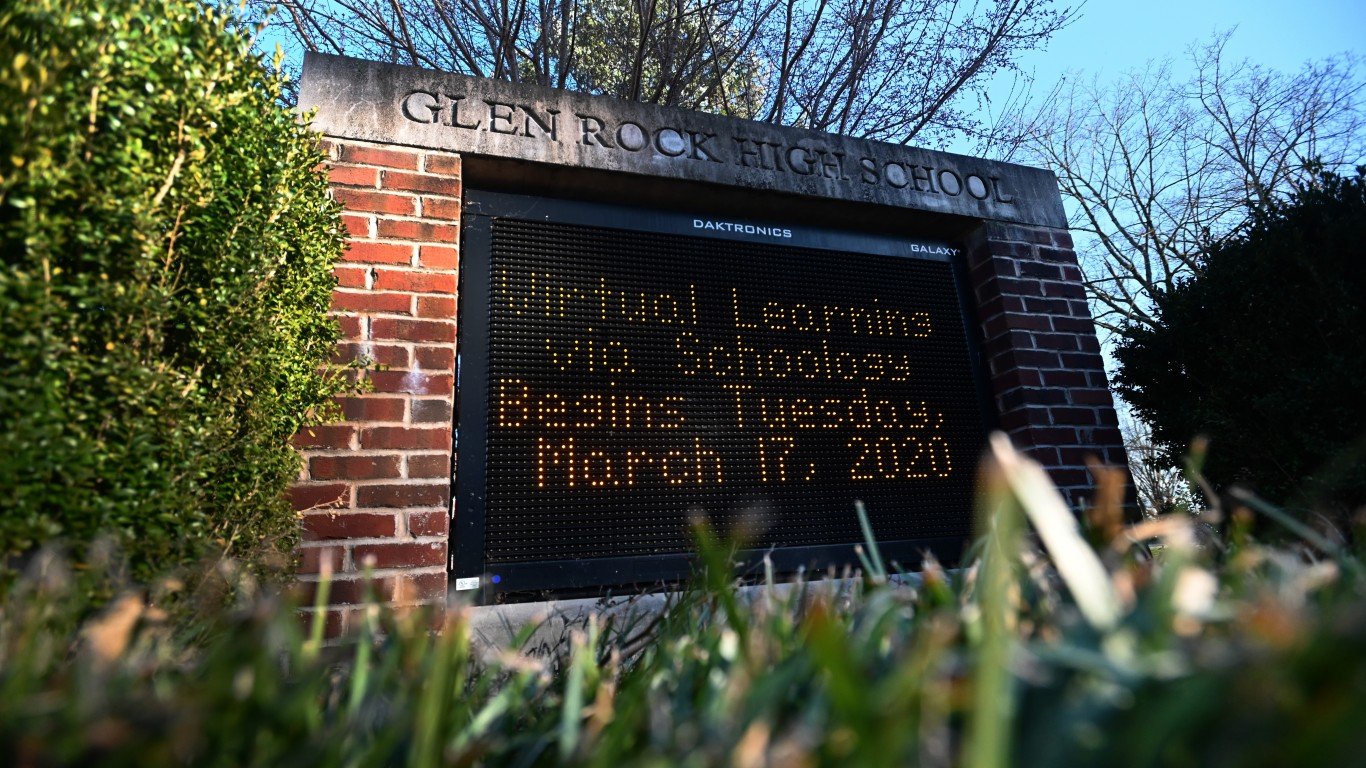
New Jersey
> Re-closing schools: Schools in Paterson extended online learning until Jan 19. Clifton’s school district shut down all schools and moved classes online until January. 105 outbreaks have been reported among students and staff in New Jersey schools.
> Health screening precautions: Daily symptom screening and history of exposure
> COVID-19 cases as of Jan 5: 5,609 per 100,000 people — 15th lowest (total: 499,636)
> Change in trailing 7-day avg. daily cases, Dec 29 – Jan 4: 6.5% — 18th smallest increase (from 463,965 to 494,317)
> Population: 8.9 million
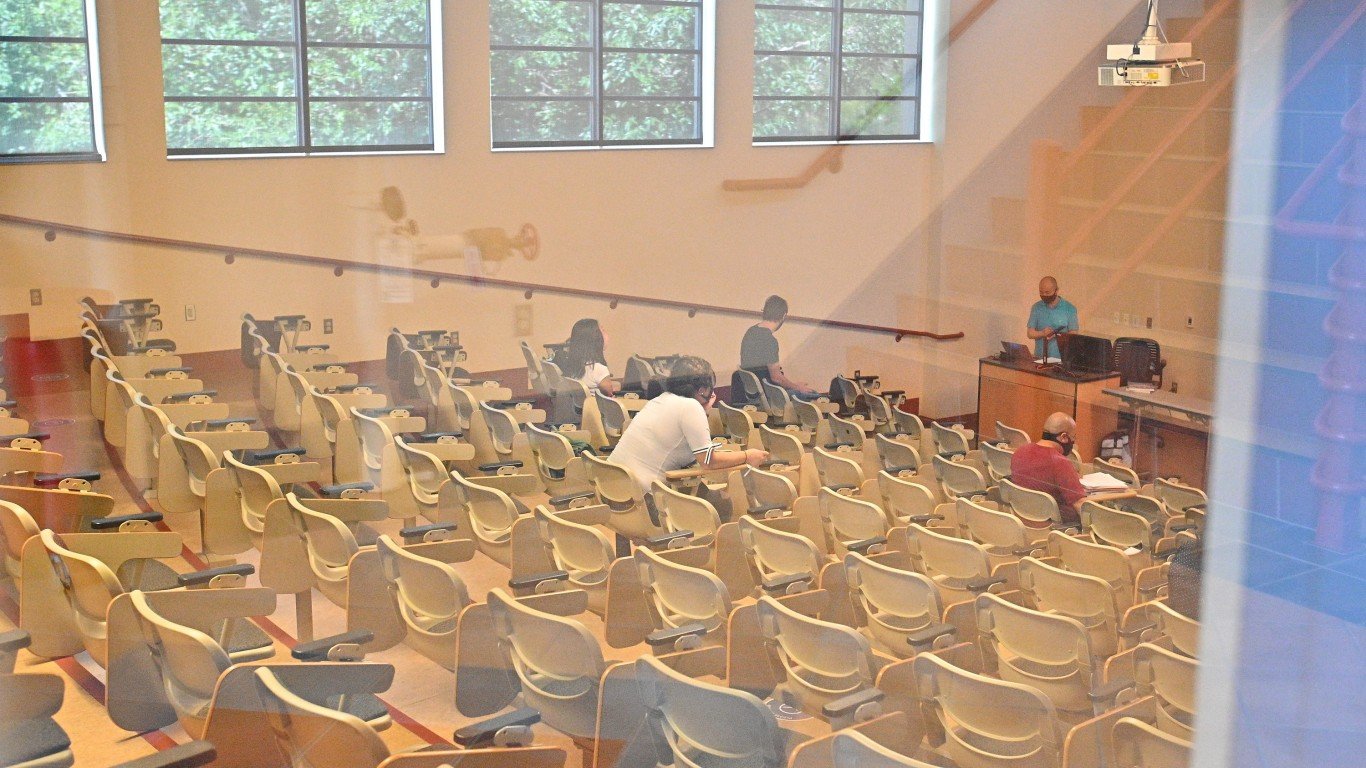
New Mexico
> Re-closing schools: The reopening of schools for in-person instruction has been paused, no districts are allowed to start a hybrid model under the new, tighter restrictions. Rio Rancho Public Schools moved to full-time online instruction until Jan 18.
> Health screening precautions: Daily temperature checks
> COVID-19 cases as of Jan 5: 7,030 per 100,000 people — 22nd highest (total: 147,315)
> Change in trailing 7-day avg. daily cases, Dec 29 – Jan 4: 6.2% — 17th smallest increase (from 138,659 to 147,315)
> Population: 2.1 million
[in-text-ad]

New York
> Re-closing schools: Only elementary schools are open for in-person instruction and for students whose parents agree to a weekly testing regimen for the coronavirus.
> Health screening precautions: Daily temperature checks for all
> COVID-19 cases as of Jan 5: 5,327 per 100,000 people — 11th lowest (total: 1,041,028)
> Change in trailing 7-day avg. daily cases, Dec 29 – Jan 4: 10.3% — 7th largest increase (from 932,552 to 1,028,362)
> Population: 19.5 million
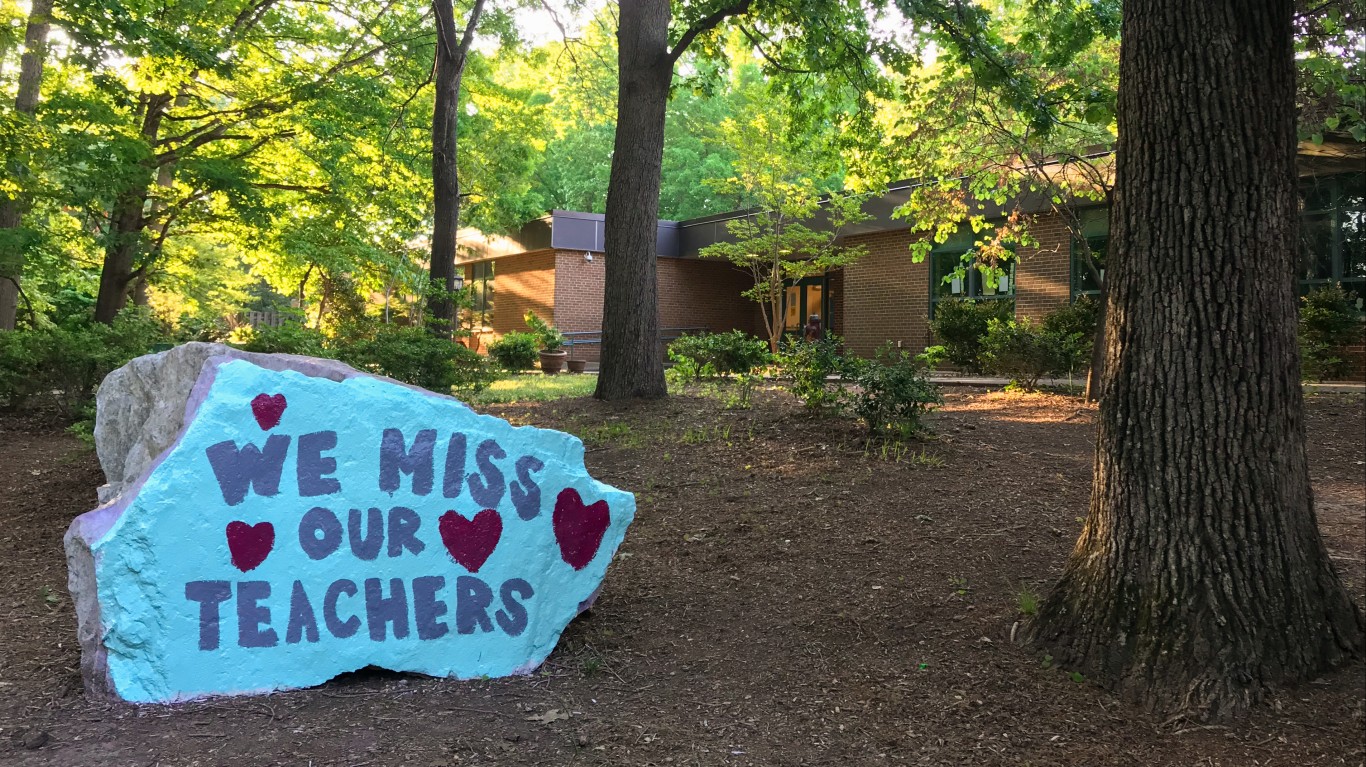
North Carolina
> Re-closing schools: Some Cumberland County Schools schools will reopen in January 2021. The Johnston County school board voted 5-2 to suspend in-person classes.
> Health screening precautions: Daily temperature checks
> COVID-19 cases as of Jan 5: 5,541 per 100,000 people — 14th lowest (total: 575,396)
> Change in trailing 7-day avg. daily cases, Dec 29 – Jan 4: 9.5% — 8th largest increase (from 520,716 to 570,111)
> Population: 10.4 million
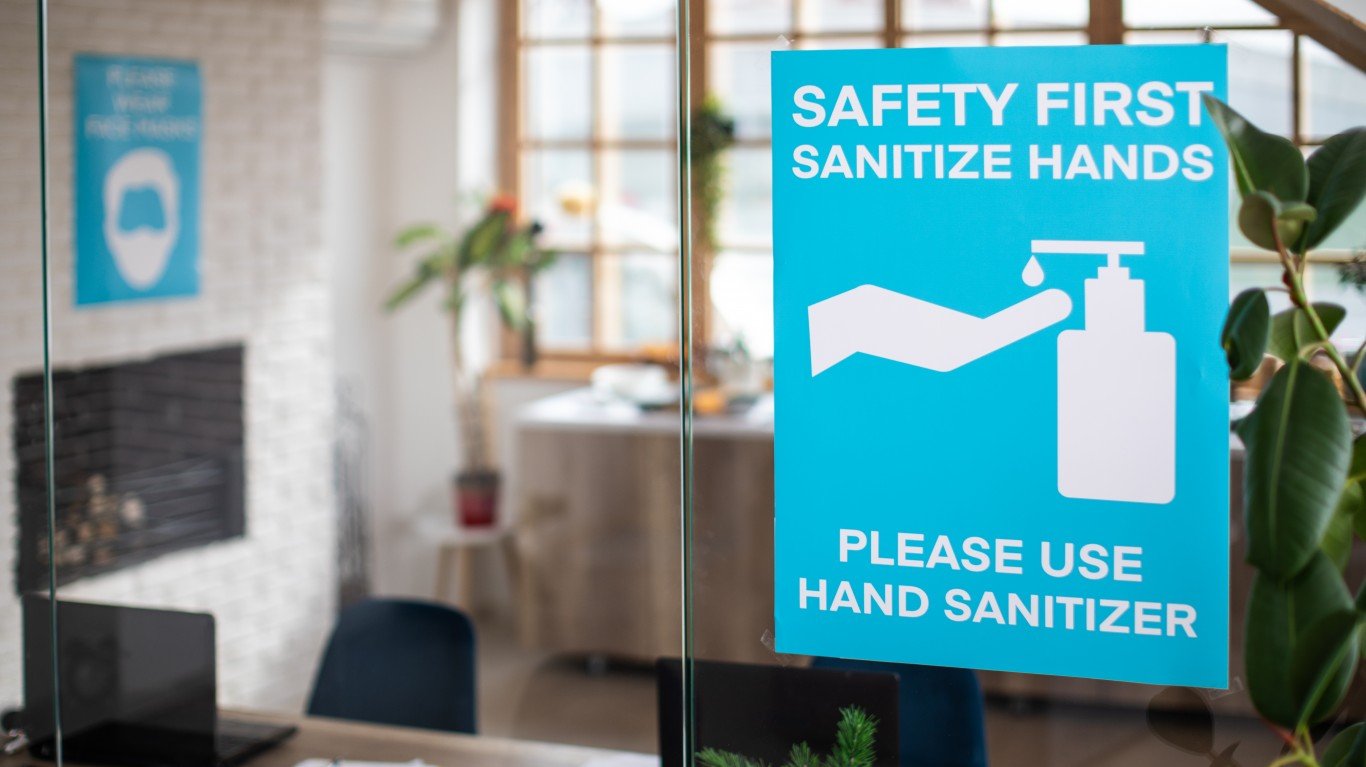
North Dakota
> Re-closing schools: The state started free rapid testing for K-12 teachers, staff and administrators. High school winter sports and extracurricular activities were suspended statewide until Dec. 14.
> Health screening precautions: Testing for COVID-19 based on risk level
> COVID-19 cases as of Jan 5: 12,301 per 100,000 people — the highest (total: 93,494)
> Change in trailing 7-day avg. daily cases, Dec 29 – Jan 4: 1.8% — the smallest increase (from 91,558 to 93,240)
> Population: 760000
[in-text-ad-2]

Ohio
> Re-closing schools: Ohio students who are exposed to COVID-19 are no longer asked to quarantine, if mask and distancing protocols are followed.
> Health screening precautions: Daily symptom screening
> COVID-19 cases as of Jan 5: 6,288 per 100,000 people — 21st lowest (total: 735,003)
> Change in trailing 7-day avg. daily cases, Dec 29 – Jan 4: 7.8% — 20th largest increase (from 675,044 to 727,423)
> Population: 11.7 million
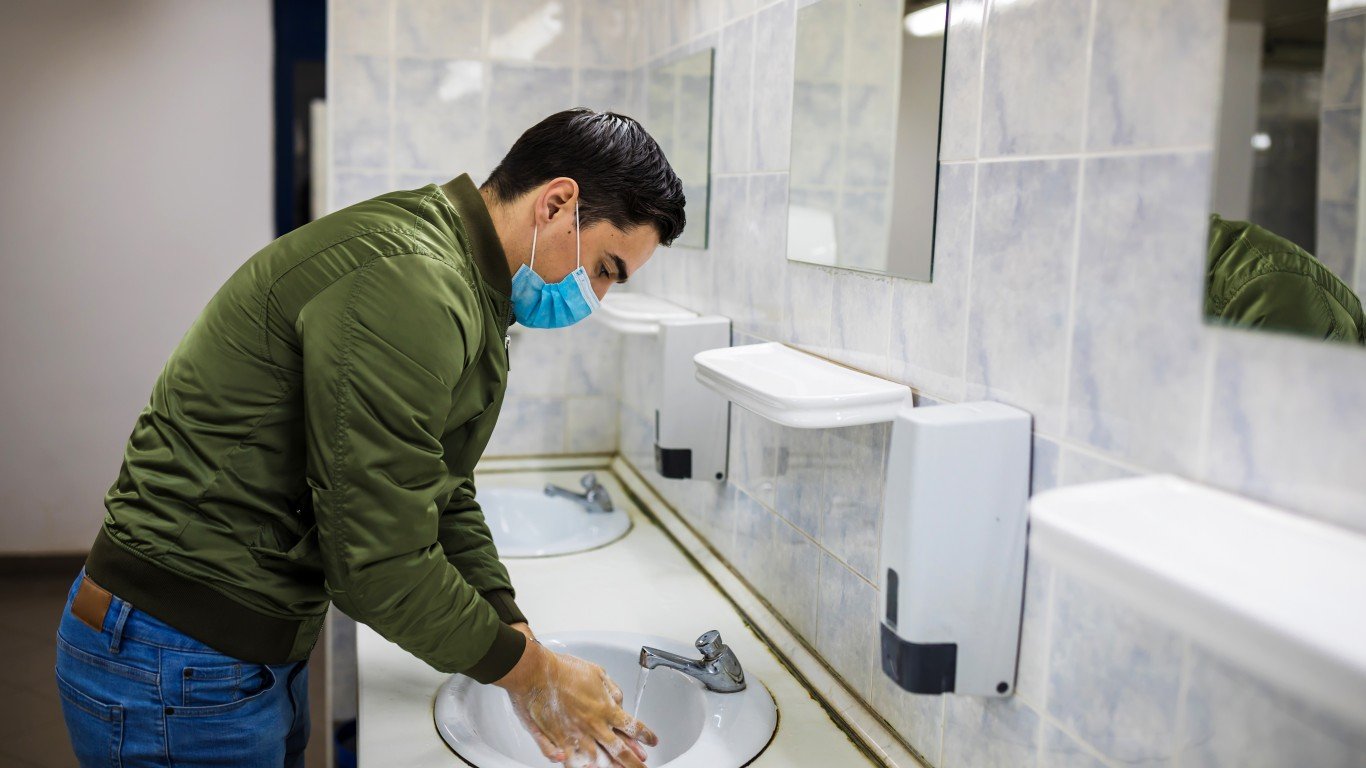
Oklahoma
> Re-closing schools: At least 17 schools districts in the state are moving to online learning due to a rise in coronavirus cases. More than half of all Oklahoma schools districts have reported COVID-19 cases.
> Health screening precautions: Daily temperature checks at home recommended
> COVID-19 cases as of Jan 5: 7,818 per 100,000 people — 16th highest (total: 308,268)
> Change in trailing 7-day avg. daily cases, Dec 29 – Jan 4: 8.6% — 13th largest increase (from 282,587 to 306,771)
> Population: 3.9 million
[in-text-ad]
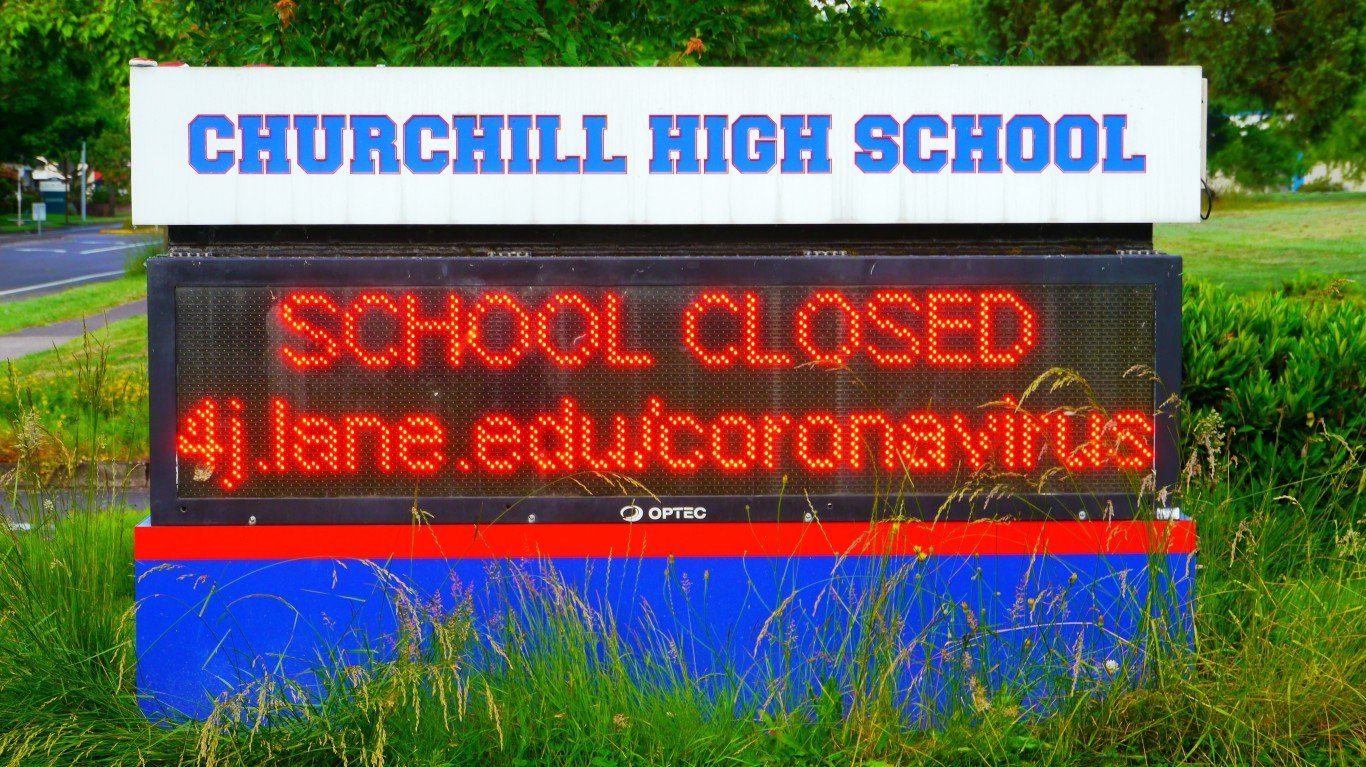
Oregon
> Re-closing schools: Starting Jan 1, individual schools will make the decision whether to open for in-person instruction. State guidelines will be advisory.
> Health screening precautions: Daily symptom screening and temperature checks
> COVID-19 cases as of Jan 5: 2,827 per 100,000 people — 4th lowest (total: 118,453)
> Change in trailing 7-day avg. daily cases, Dec 29 – Jan 4: 7.2% — 23rd smallest increase (from 110,545 to 118,456)
> Population: 4.2 million
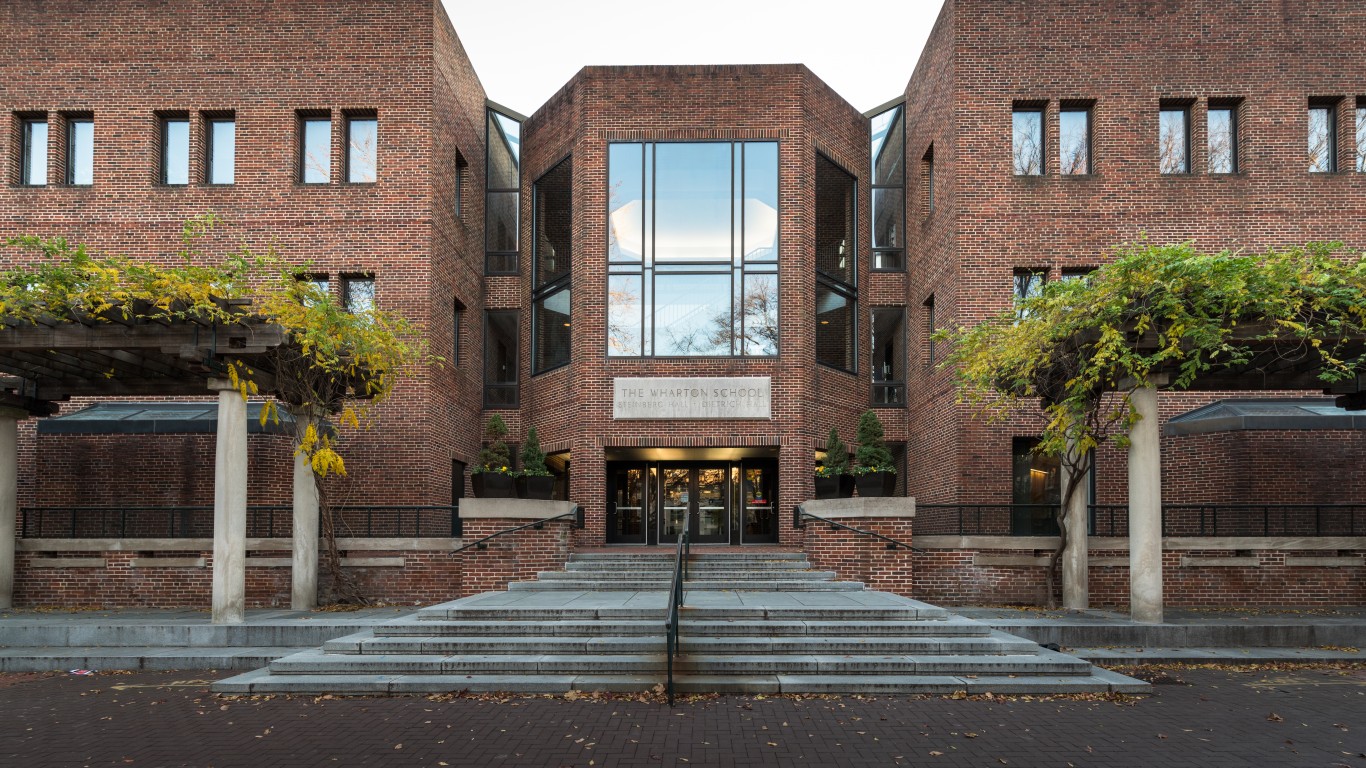
Pennsylvania
> Re-closing schools: Schools must close if they reach a certain number of confirmed COVID-19 cases. More than 99% of districts have submitted forms attesting that they are following strict health and safety protocols, a requirement to stay open.
> Health screening precautions: Daily symptom screening
> COVID-19 cases as of Jan 5: 5,262 per 100,000 people — 10th lowest (total: 673,915)
> Change in trailing 7-day avg. daily cases, Dec 29 – Jan 4: 8.4% — 16th largest increase (from 613,804 to 665,097)
> Population: 12.8 million
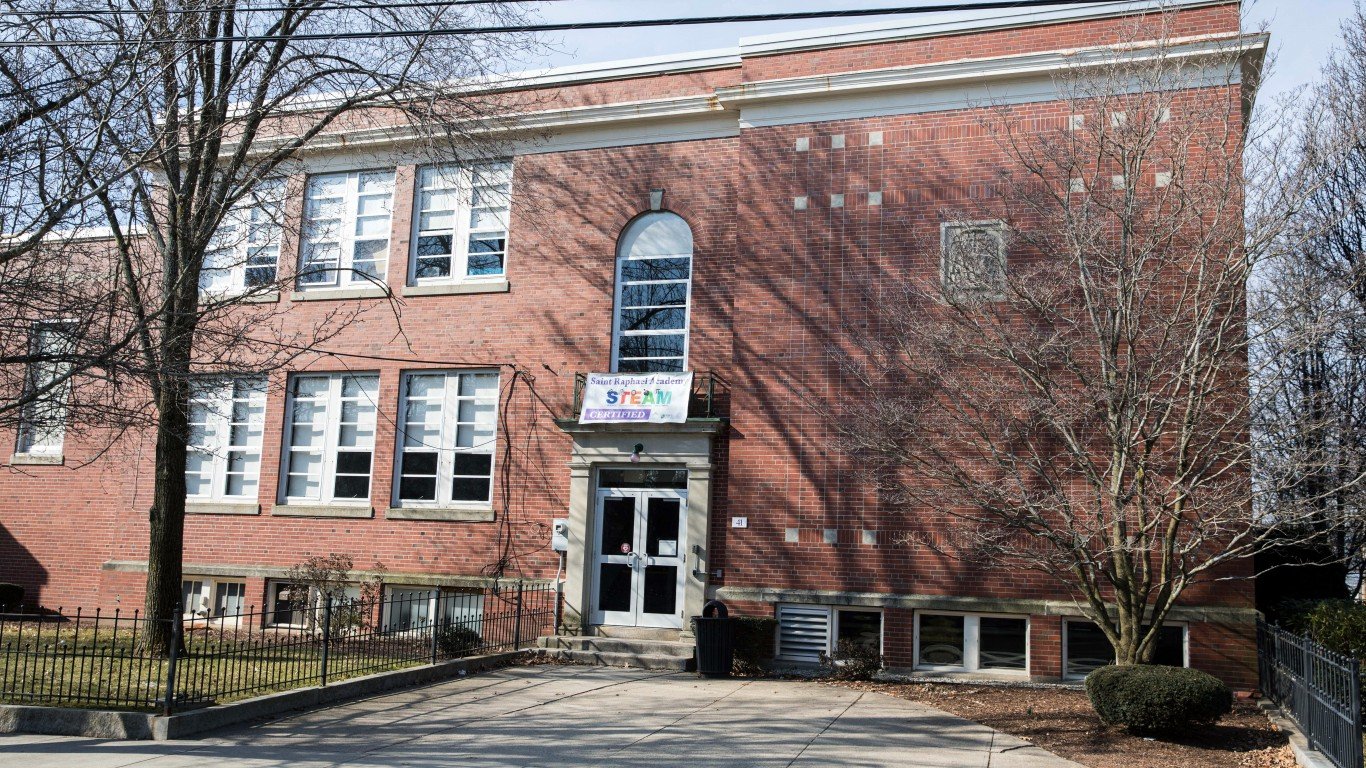
Rhode Island
> Re-closing schools: All public school districts can reopen for in-person instruction after the winter holiday break — January 7 — at the earliest.
> Health screening precautions: At-home or on-site symptom screening, temperature checks
> COVID-19 cases as of Jan 5: 8,876 per 100,000 people — 6th highest (total: 93,852)
> Change in trailing 7-day avg. daily cases, Dec 29 – Jan 4: 8.3% — 17th largest increase (from 85,602 to 92,708)
> Population: 1.1 million
[in-text-ad-2]
South Carolina
> Re-closing schools: Public schools across the state started testing for COVID-19 for free in an attempt to help keep classrooms open.
> Health screening precautions: Up to each school
> COVID-19 cases as of Jan 5: 6,453 per 100,000 people — 24th lowest (total: 328,073)
> Change in trailing 7-day avg. daily cases, Dec 29 – Jan 4: 9.2% — 10th largest increase (from 298,050 to 325,472)
> Population: 5.1 million
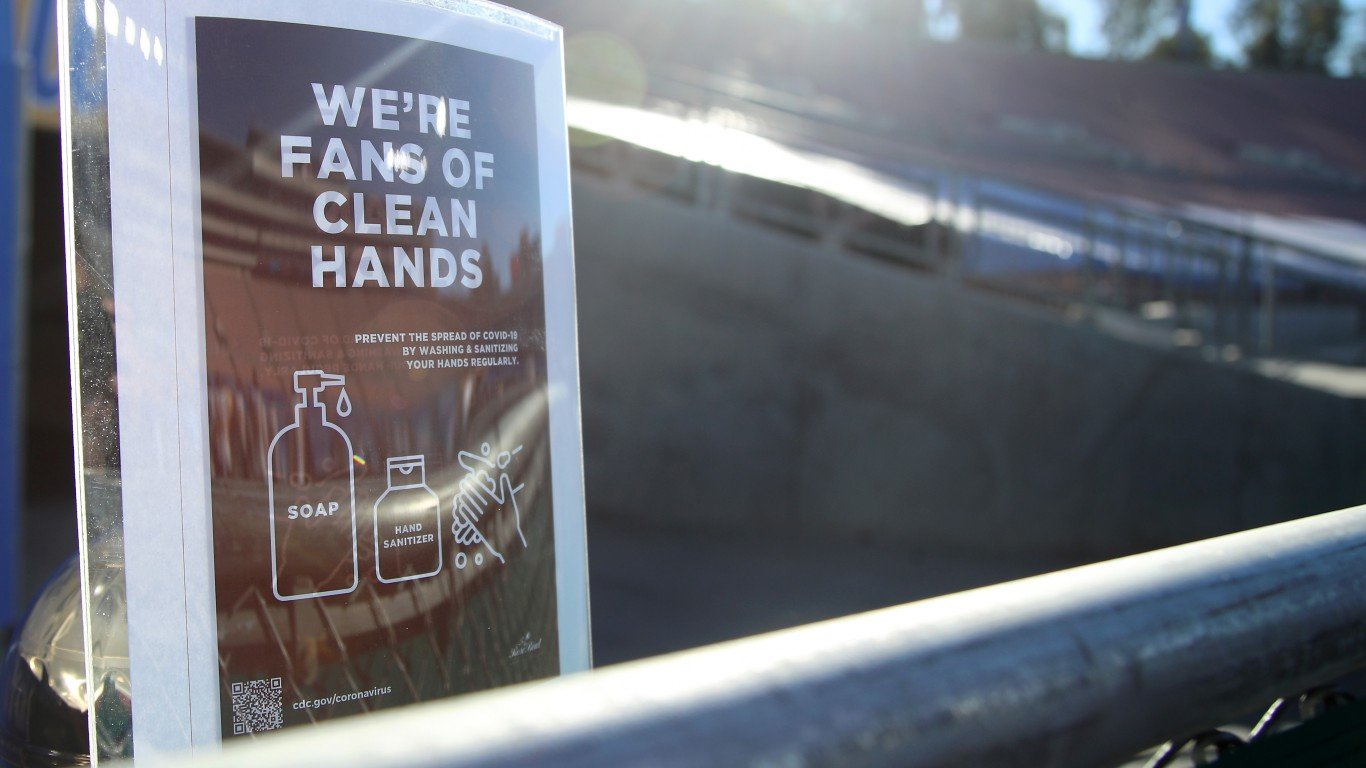
South Dakota
> Re-closing schools: South Dakota’s positivity rate is around 42%, suggesting testing is still very limited.
> Health screening precautions: Daily symptom screening and temperature checks
> COVID-19 cases as of Jan 5: 10,366 per 100,000 people — 2nd highest (total: 91,455)
> Change in trailing 7-day avg. daily cases, Dec 29 – Jan 4: 2.5% — 2nd smallest increase (from 88,894 to 91,113)
> Population: 882000
[in-text-ad]

Tennessee
> Re-closing schools: Schools in the state’s largest school districts — Shelby County Schools, Metro Nashville Public Schools, Knox County Schools and Hamilton County Schools — are finishing the fall semester with fully remote instruction.
> Health screening precautions: Daily symptom screening and temperature checks
> COVID-19 cases as of Jan 5: 9,123 per 100,000 people — 4th highest (total: 617,649)
> Change in trailing 7-day avg. daily cases, Dec 29 – Jan 4: 8.5% — 14th largest increase (from 564,080 to 612,250)
> Population: 6.8 million
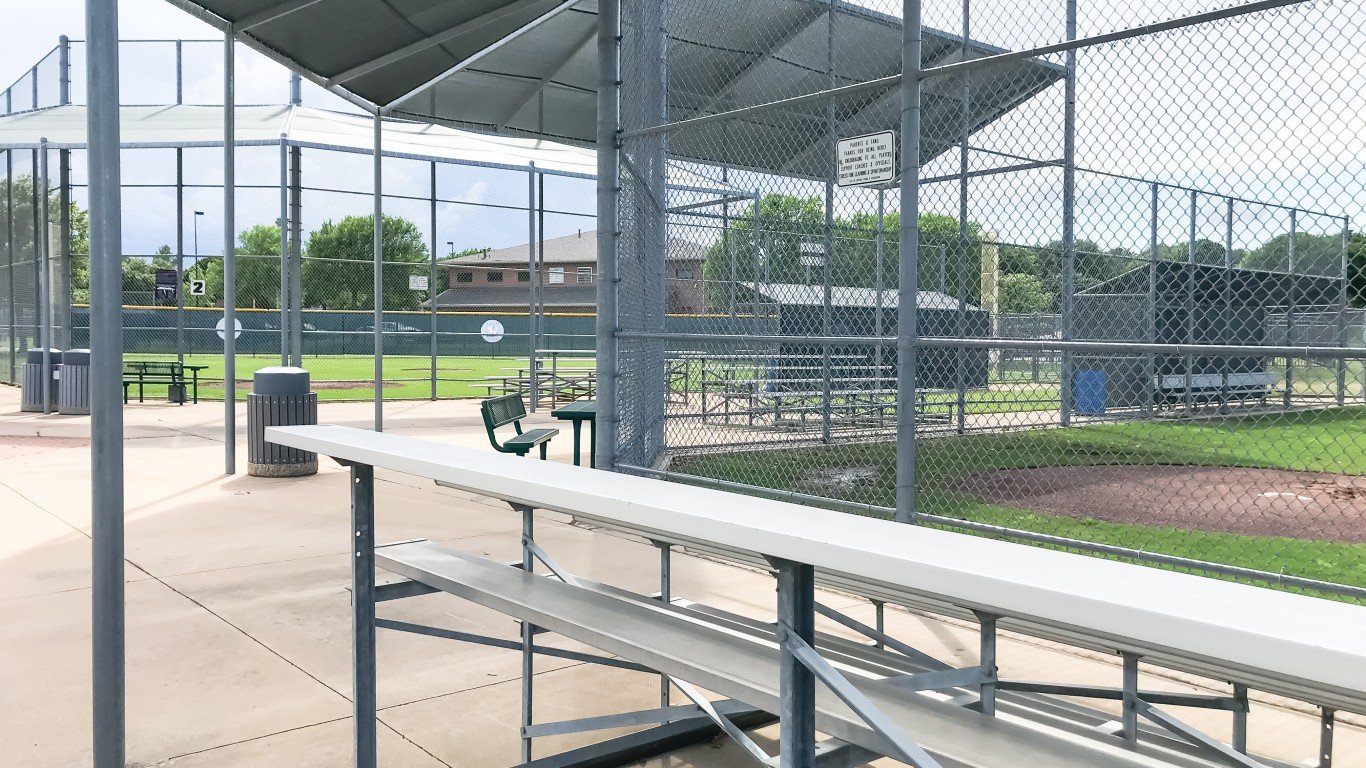
Texas
> Re-closing schools: At least 8 school districts in North Texas and 7 in Central Texas temporarily moved classes online due to a spike in COVID-19 cases. Several schools in the Fort Worth-area temporarily moved classes online due to a spike of COVID-19 cases.
> Health screening precautions: Symptom self-screening for staff
> COVID-19 cases as of Jan 5: 6,422 per 100,000 people — 23rd lowest (total: 1,843,153)
> Change in trailing 7-day avg. daily cases, Dec 29 – Jan 4: 7.6% — 21st largest increase (from 1,683,426 to 1,811,523)
> Population: 28.7 million
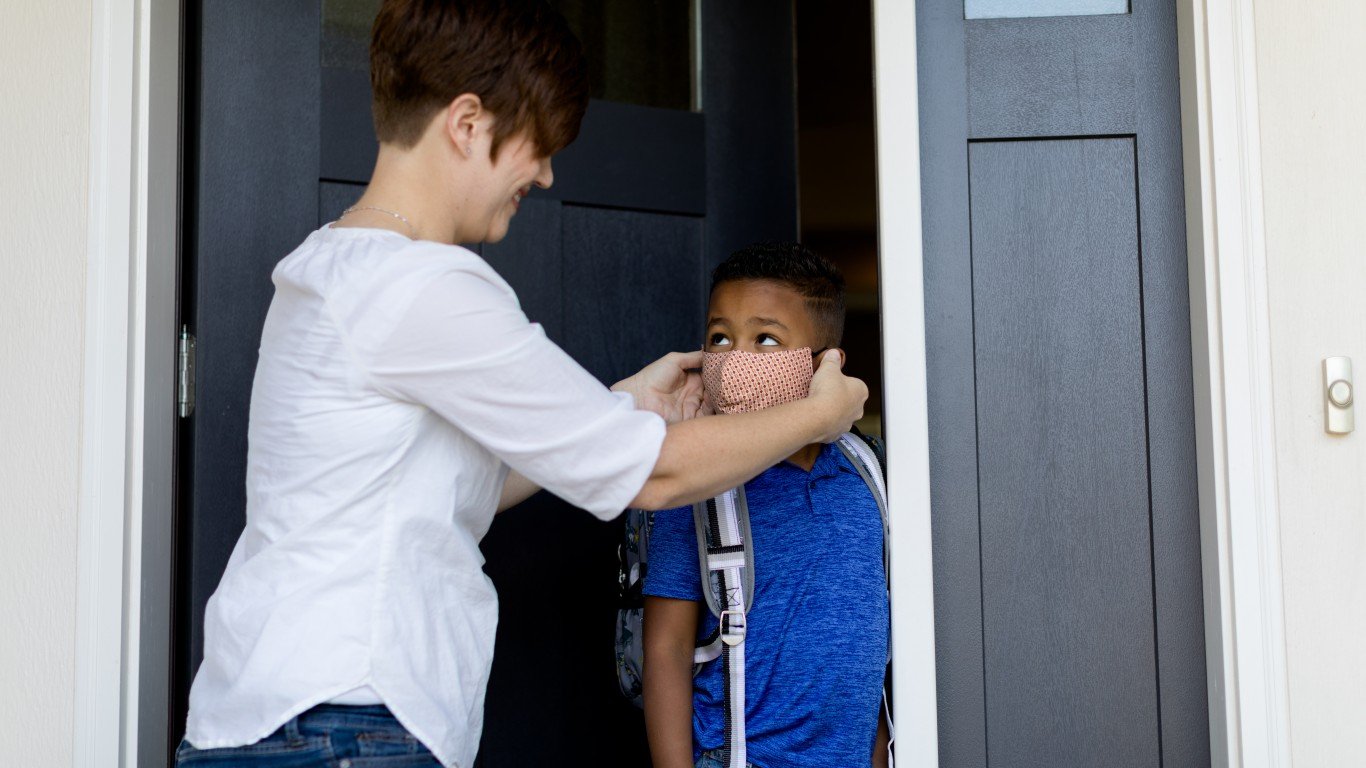
Utah
> Re-closing schools: Several dozens of Utah schools, including all schools in Salt Lake City, temporarily switched to remote learning in December. Teachers are now eligible for COVID-19 vaccinations.
> Health screening precautions: Self-monitoring symptoms
> COVID-19 cases as of Jan 5: 9,141 per 100,000 people — 3rd highest (total: 288,951)
> Change in trailing 7-day avg. daily cases, Dec 29 – Jan 4: 7.1% — 22nd smallest increase (from 266,590 to 285,633)
> Population: 3.2 million
[in-text-ad-2]
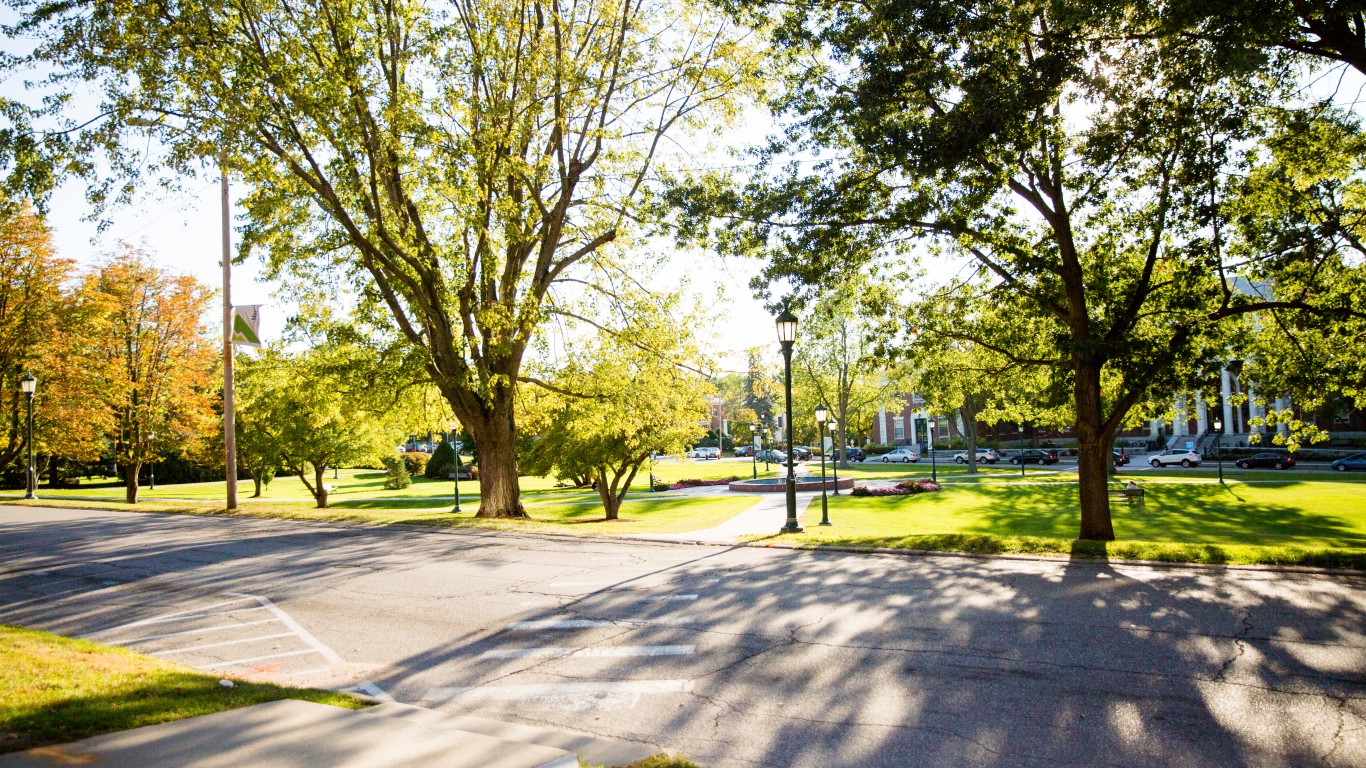
Vermont
> Re-closing schools: Asymptomatic teachers and staff members at all public schools in Vermont can take an on-site COVID-19 test.
> Health screening precautions: Daily symptom screening at home
> COVID-19 cases as of Jan 5: 1,283 per 100,000 people — the lowest (total: 8,038)
> Change in trailing 7-day avg. daily cases, Dec 29 – Jan 4: 10.6% — 6th largest increase (from 7,120 to 7,873)
> Population: 626000
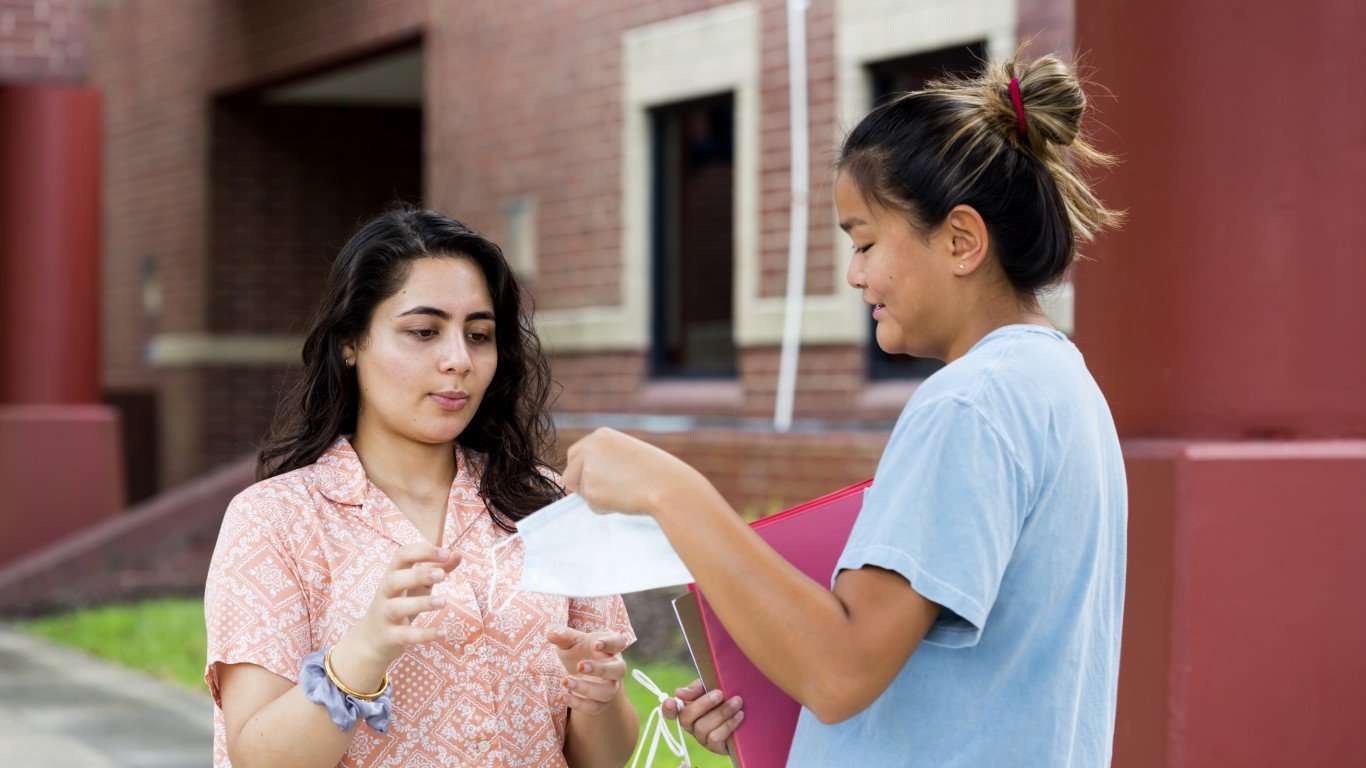
Virginia
> Re-closing schools: Henrico County Schools delay in-person reopening. Fairfax County Public Schools in moving Group 3 students to full-time remote learning. Richmond Public Schools cancelled winter sports.
> Health screening precautions: Daily symptom screenings
> COVID-19 cases as of Jan 5: 4,366 per 100,000 people — 7th lowest (total: 371,913)
> Change in trailing 7-day avg. daily cases, Dec 29 – Jan 4: 9.3% — 9th largest increase (from 336,175 to 367,536)
> Population: 8.5 million
[in-text-ad]
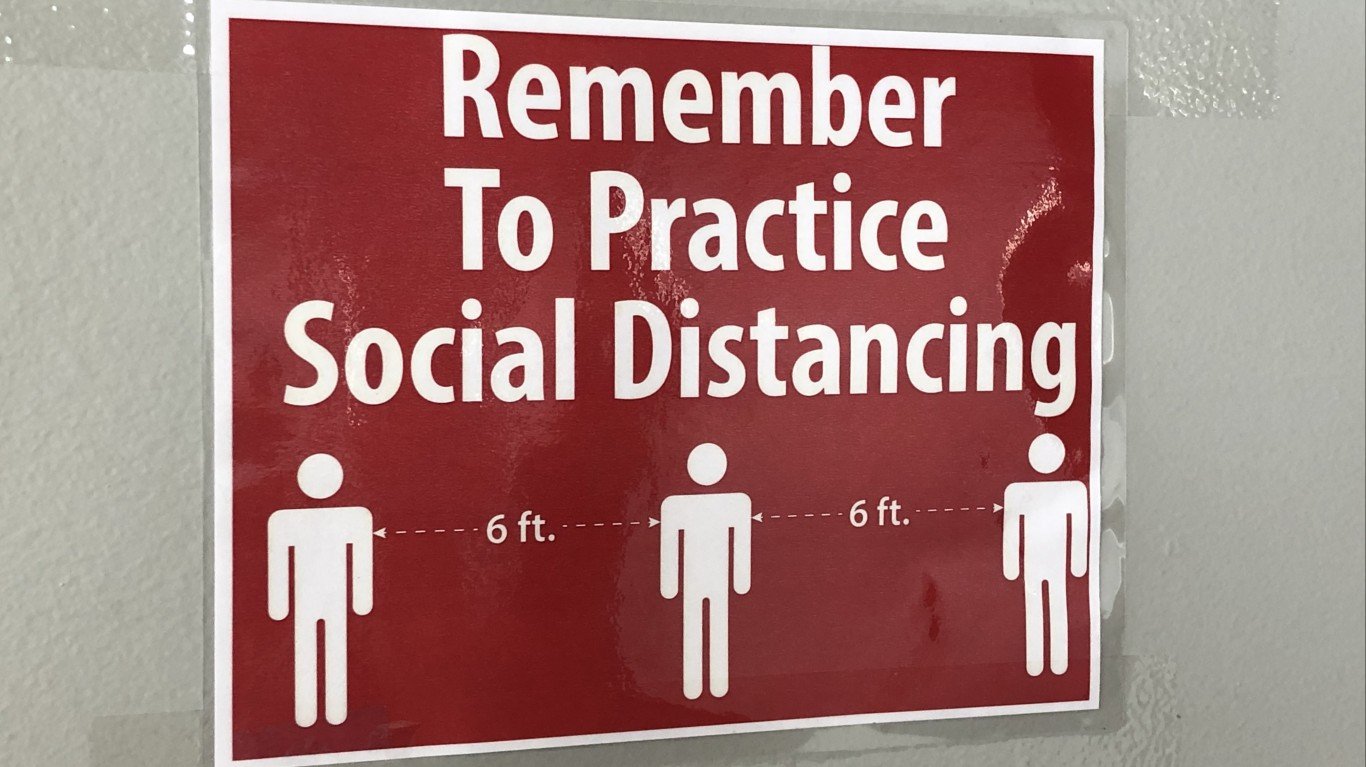
Washington
> Re-closing schools: Health officials in Thurston County recommend holding off on expanding in-person learning due to resurgence of COVID-19 cases.
> Health screening precautions: Daily symptom screening and temperature checks
> COVID-19 cases as of Jan 5: 3,403 per 100,000 people — 5th lowest (total: 256,435)
> Change in trailing 7-day avg. daily cases, Dec 29 – Jan 4: 7.4% — 25th largest increase (from 238,672 to 256,435)
> Population: 7.5 million
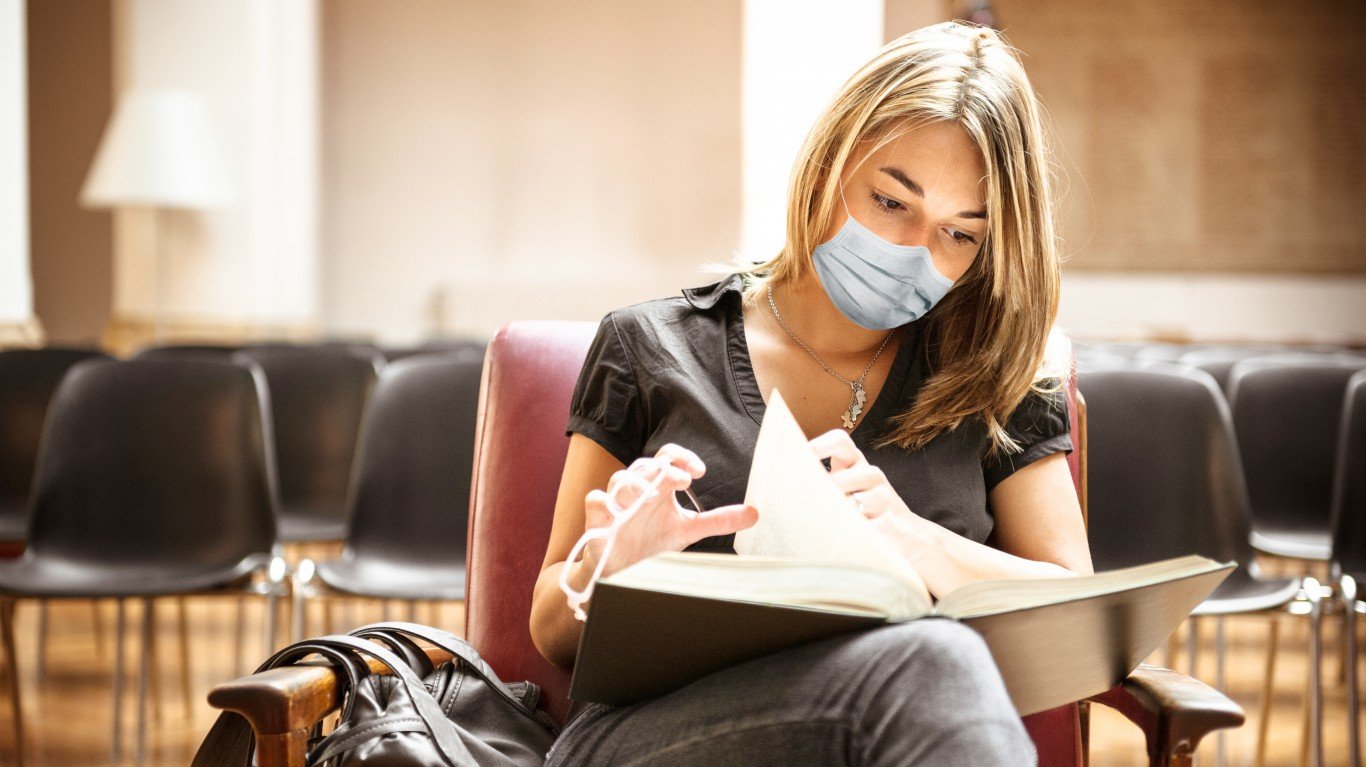
West Virginia
> Re-closing schools: Elementary, middle, and many high schools will reopen for in-person instruction starting Jan 19.
> Health screening precautions: Daily symptom screening and temperature checks
> COVID-19 cases as of Jan 5: 5,159 per 100,000 people — 9th lowest (total: 93,162)
> Change in trailing 7-day avg. daily cases, Dec 29 – Jan 4: 12.8% — 3rd largest increase (from 81,436 to 91,886)
> Population: 1.8 million
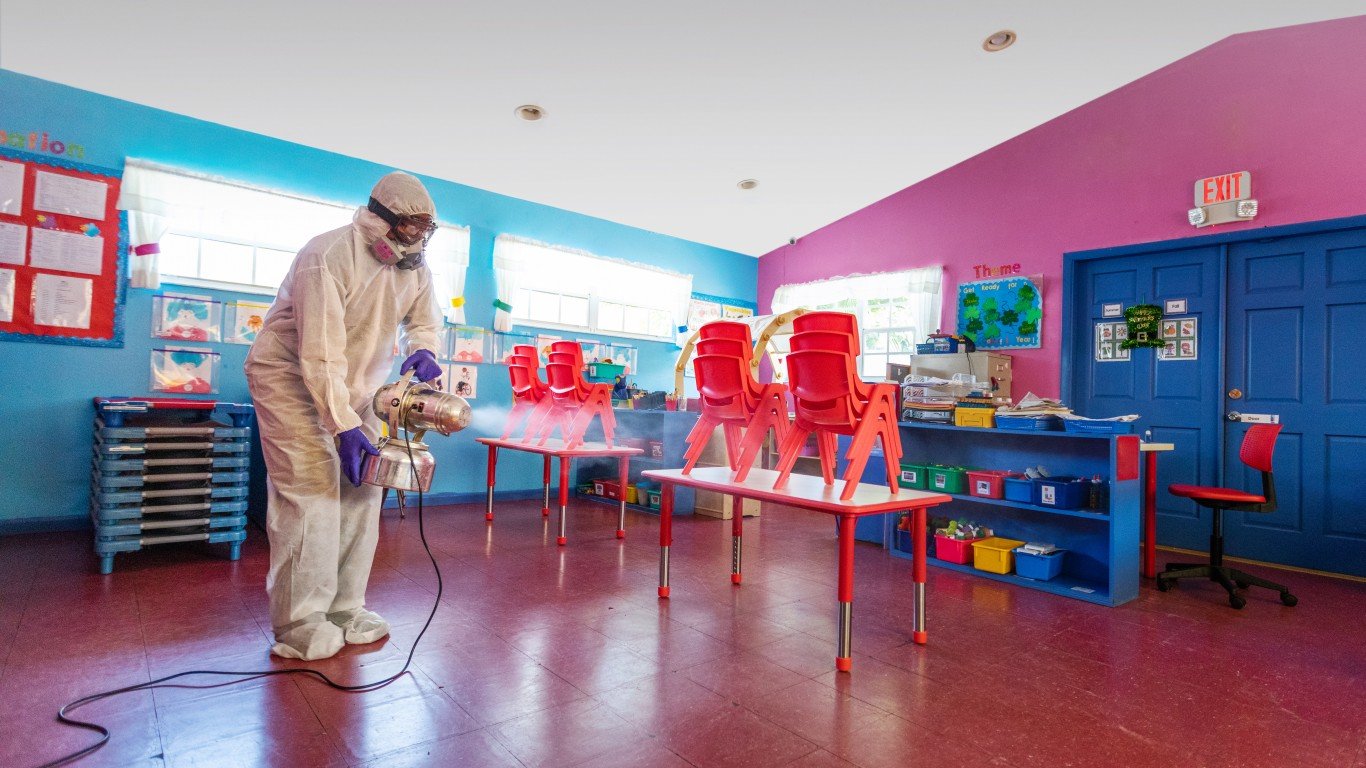
Wisconsin
> Re-closing schools: Racine Public Health Department ordered schools in Racine, Wind Point, and Elmwood Park to close until Jan 15.
> Health screening precautions: Daily symptom screening and temperature checks recommended
> COVID-19 cases as of Jan 5: 8,452 per 100,000 people — 8th highest (total: 491,341)
> Change in trailing 7-day avg. daily cases, Dec 29 – Jan 4: 3.3% — 5th smallest increase (from 472,153 to 487,938)
> Population: 5.8 million
[in-text-ad-2]

Wyoming
> Re-closing schools: Students don’t have to quarantine anymore if, when exposed, both the infected student and close contacts were wearing face coverings. All students in Wyoming City Schools were moved to remote learning from Jan 4 – Jan 8.
> Health screening precautions: Up to each district
> COVID-19 cases as of Jan 5: 7,832 per 100,000 people — 15th highest (total: 45,247)
> Change in trailing 7-day avg. daily cases, Dec 29 – Jan 4: 3.5% — 7th smallest increase (from 43,704 to 45,247)
> Population: 578000
Take This Retirement Quiz To Get Matched With A Financial Advisor (Sponsored)
Take the quiz below to get matched with a financial advisor today.
Each advisor has been vetted by SmartAsset and is held to a fiduciary standard to act in your best interests.
Here’s how it works:
1. Answer SmartAsset advisor match quiz
2. Review your pre-screened matches at your leisure. Check out the
advisors’ profiles.
3. Speak with advisors at no cost to you. Have an introductory call on the phone or introduction in person and choose whom to work with in the future
Take the retirement quiz right here.
Thank you for reading! Have some feedback for us?
Contact the 24/7 Wall St. editorial team.
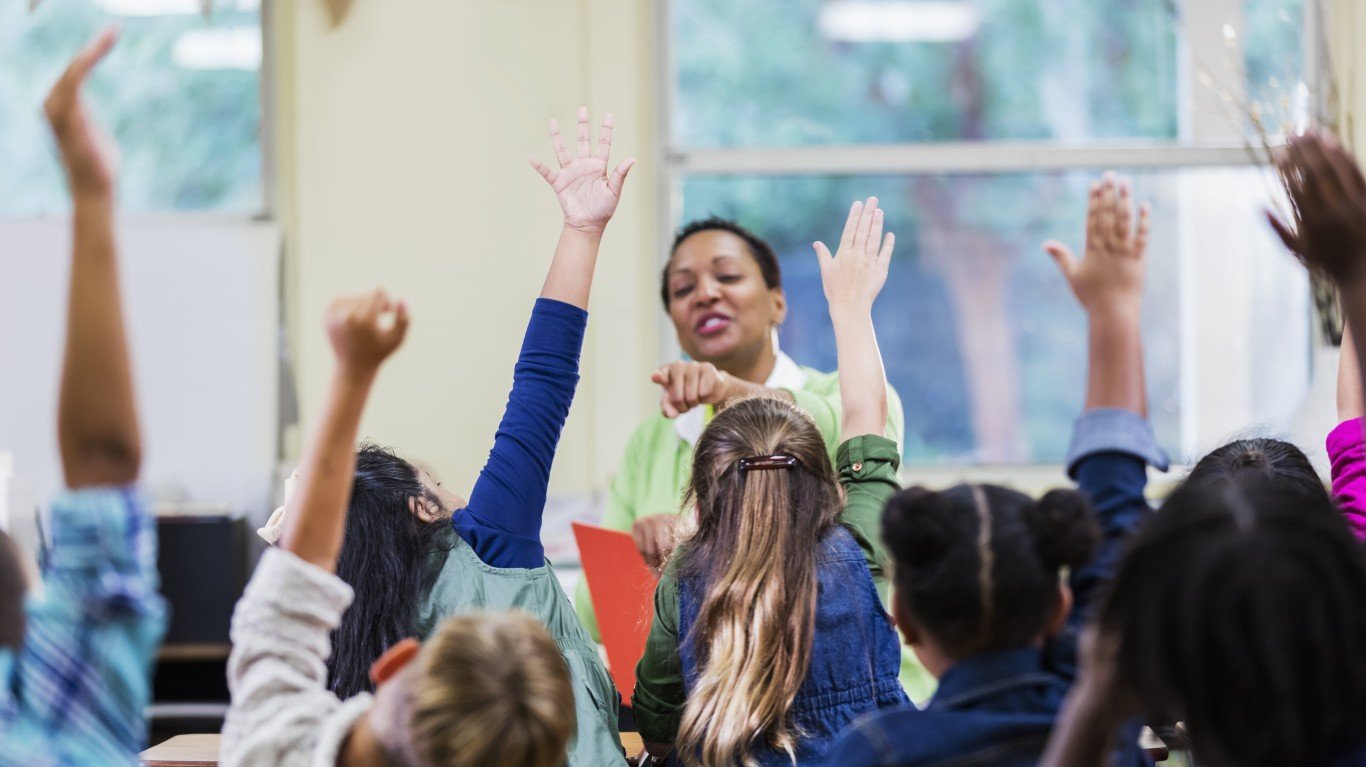 24/7 Wall St.
24/7 Wall St.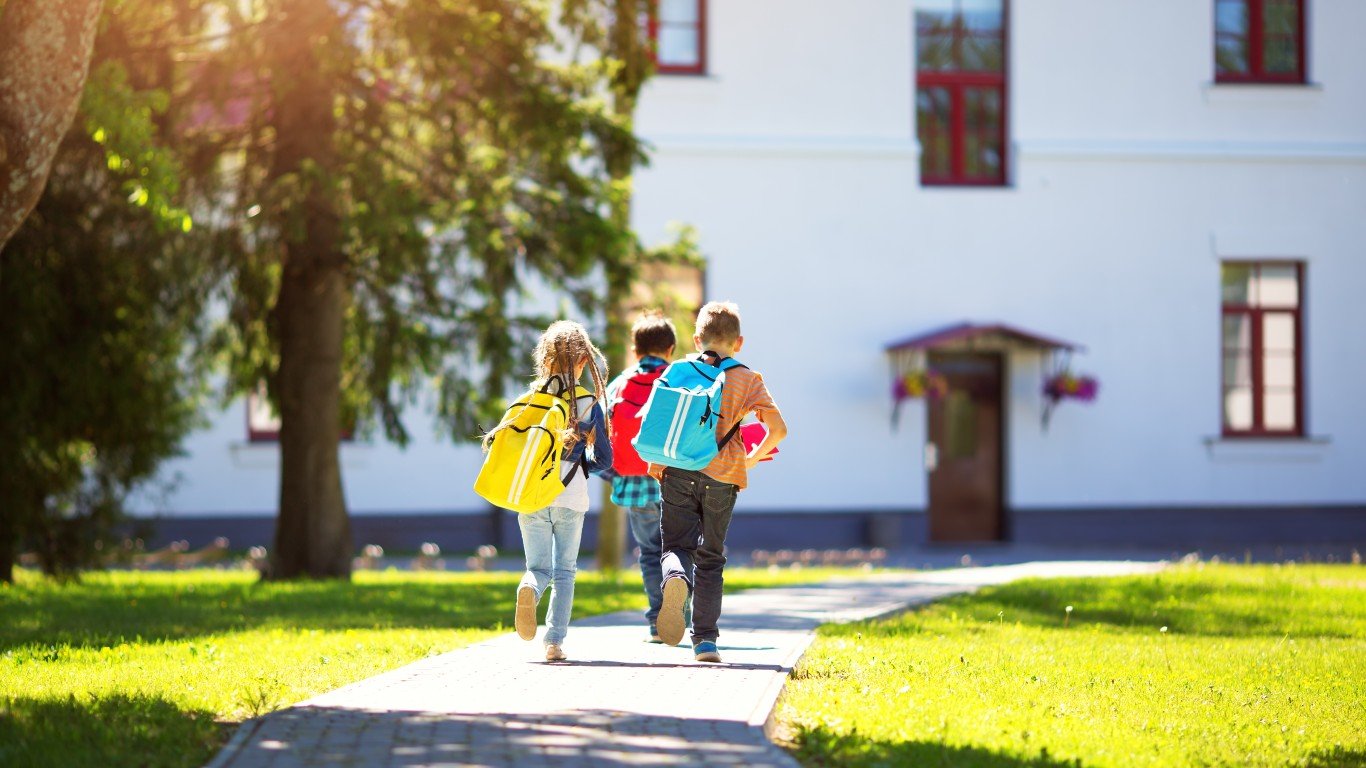 24/7 Wall St.
24/7 Wall St. 24/7 Wall St.
24/7 Wall St.